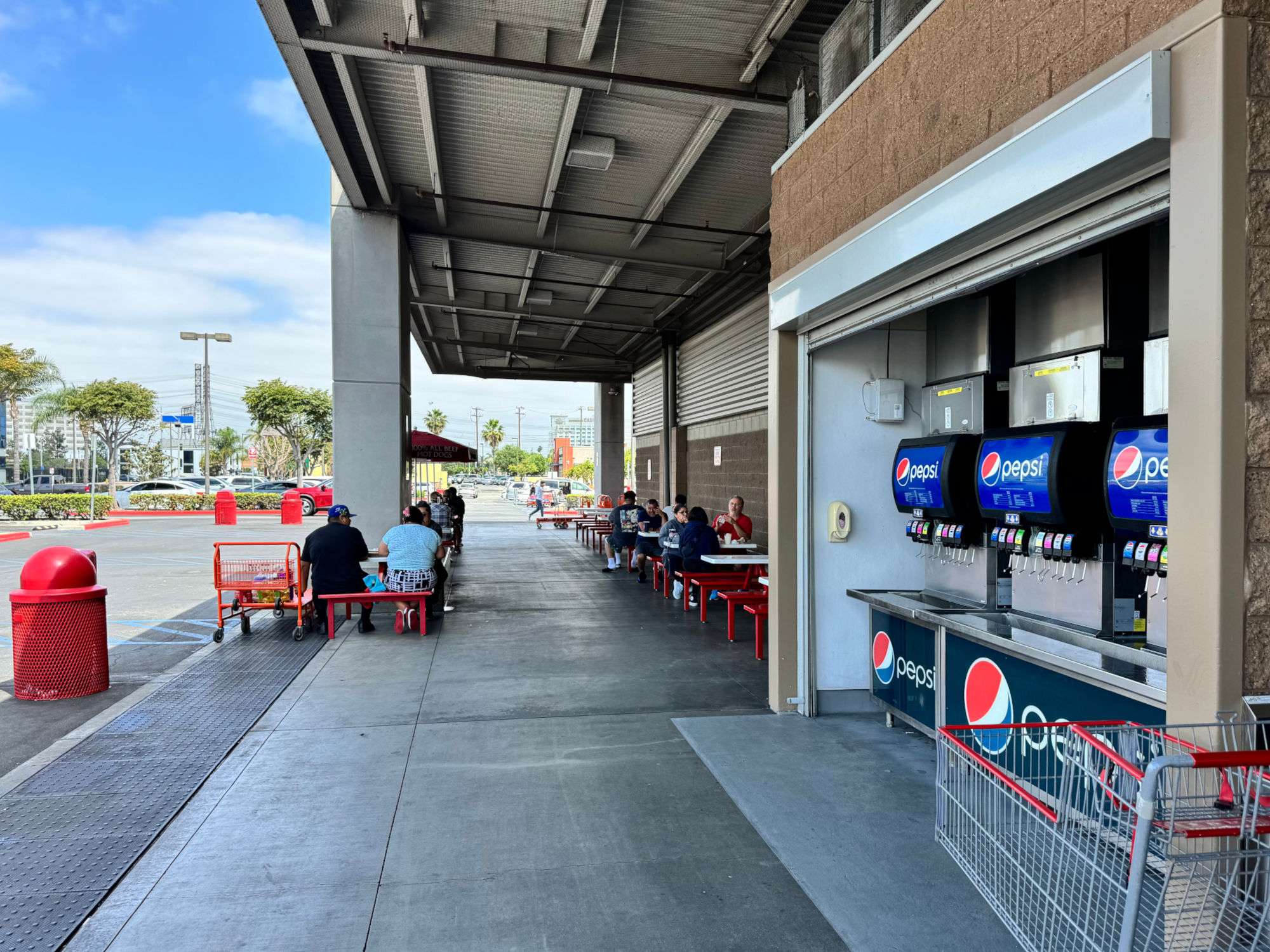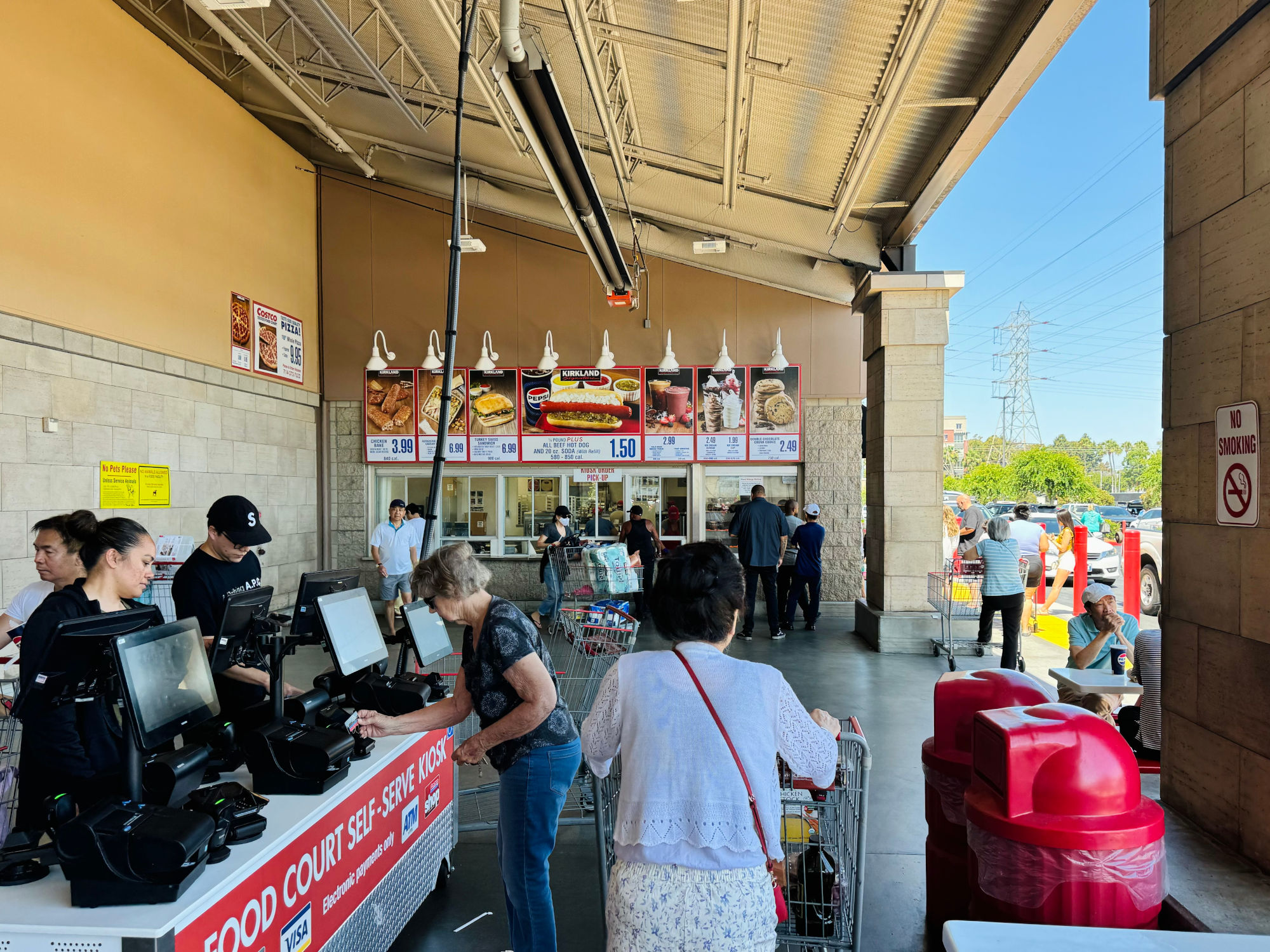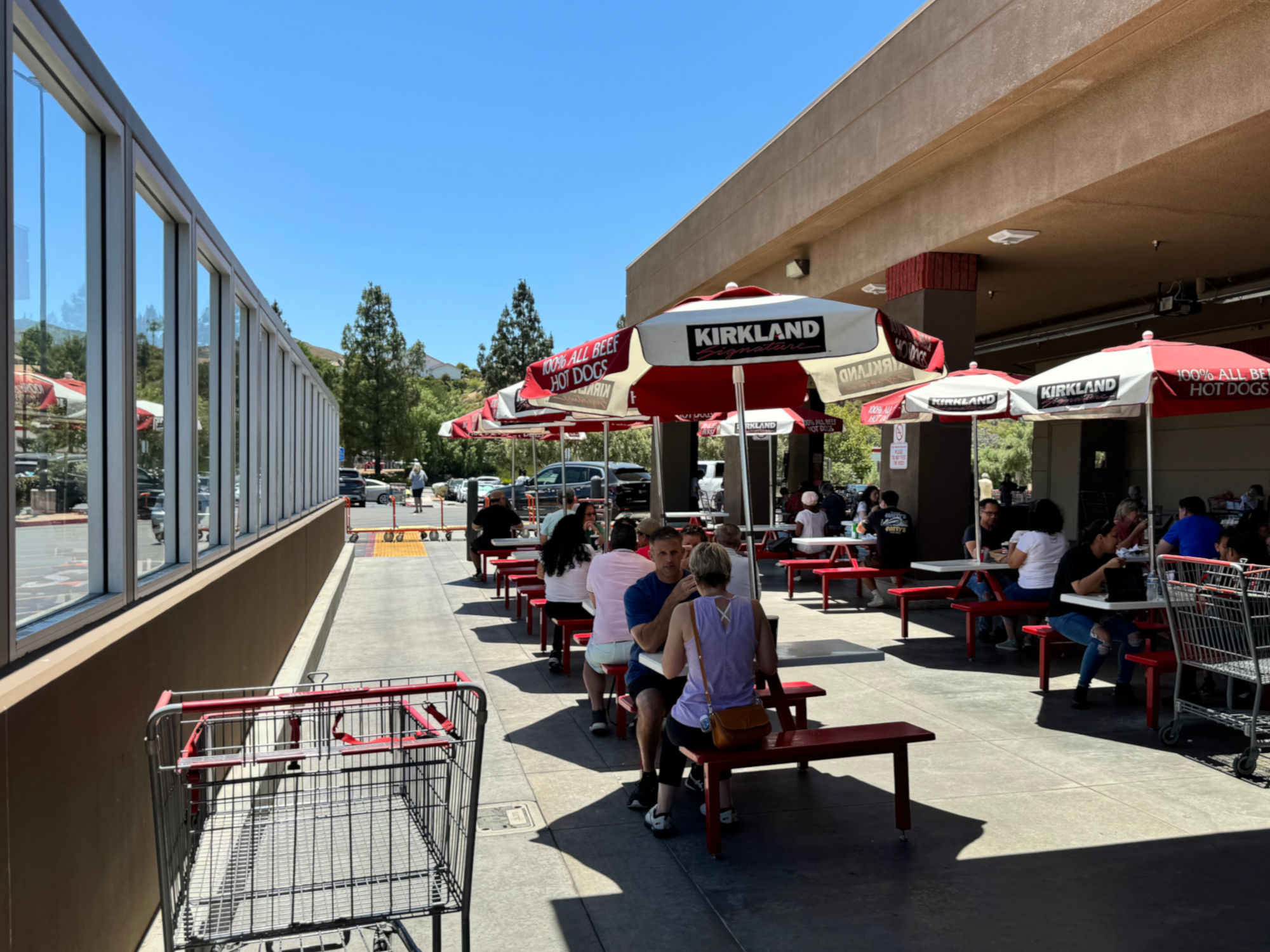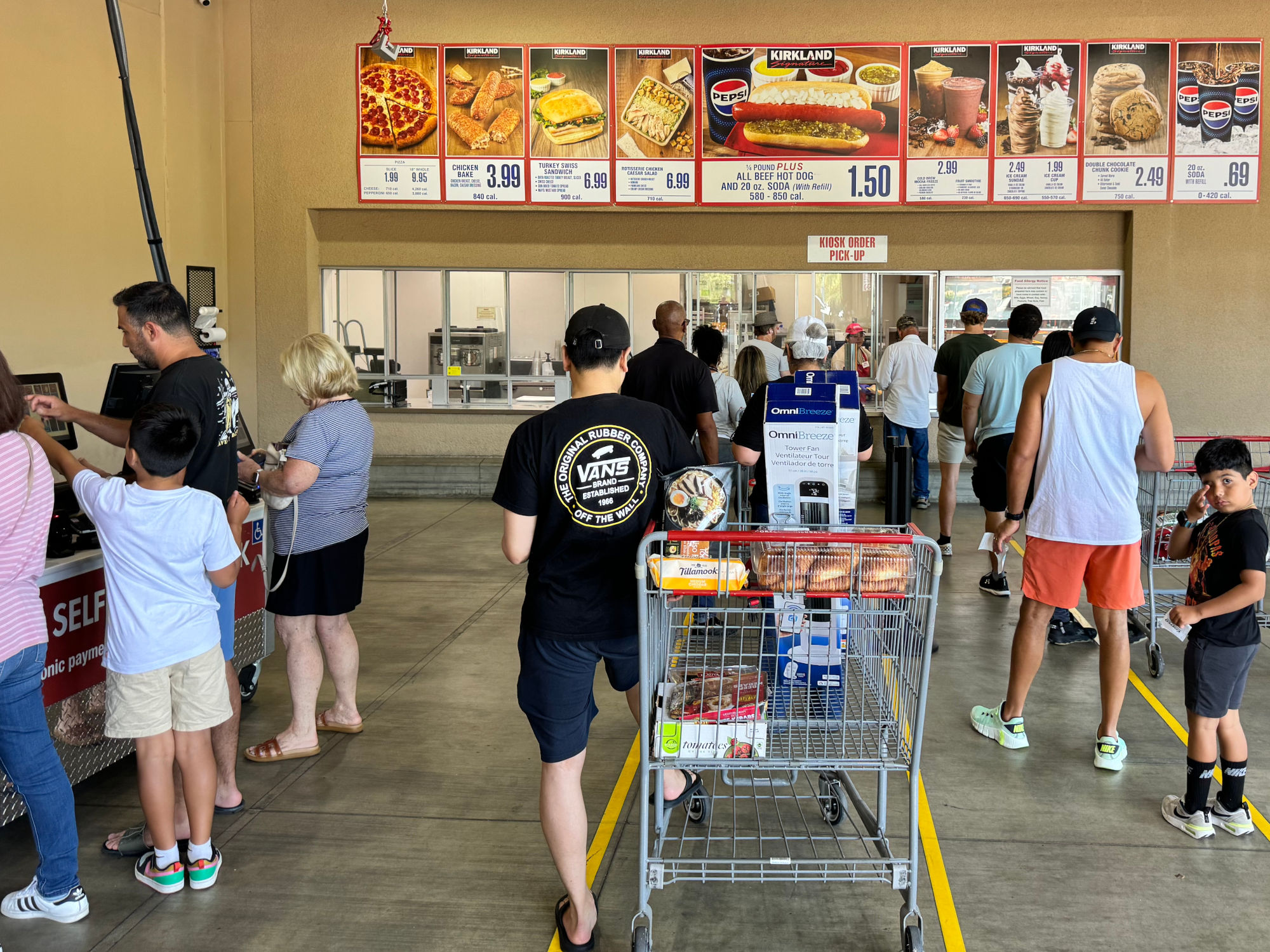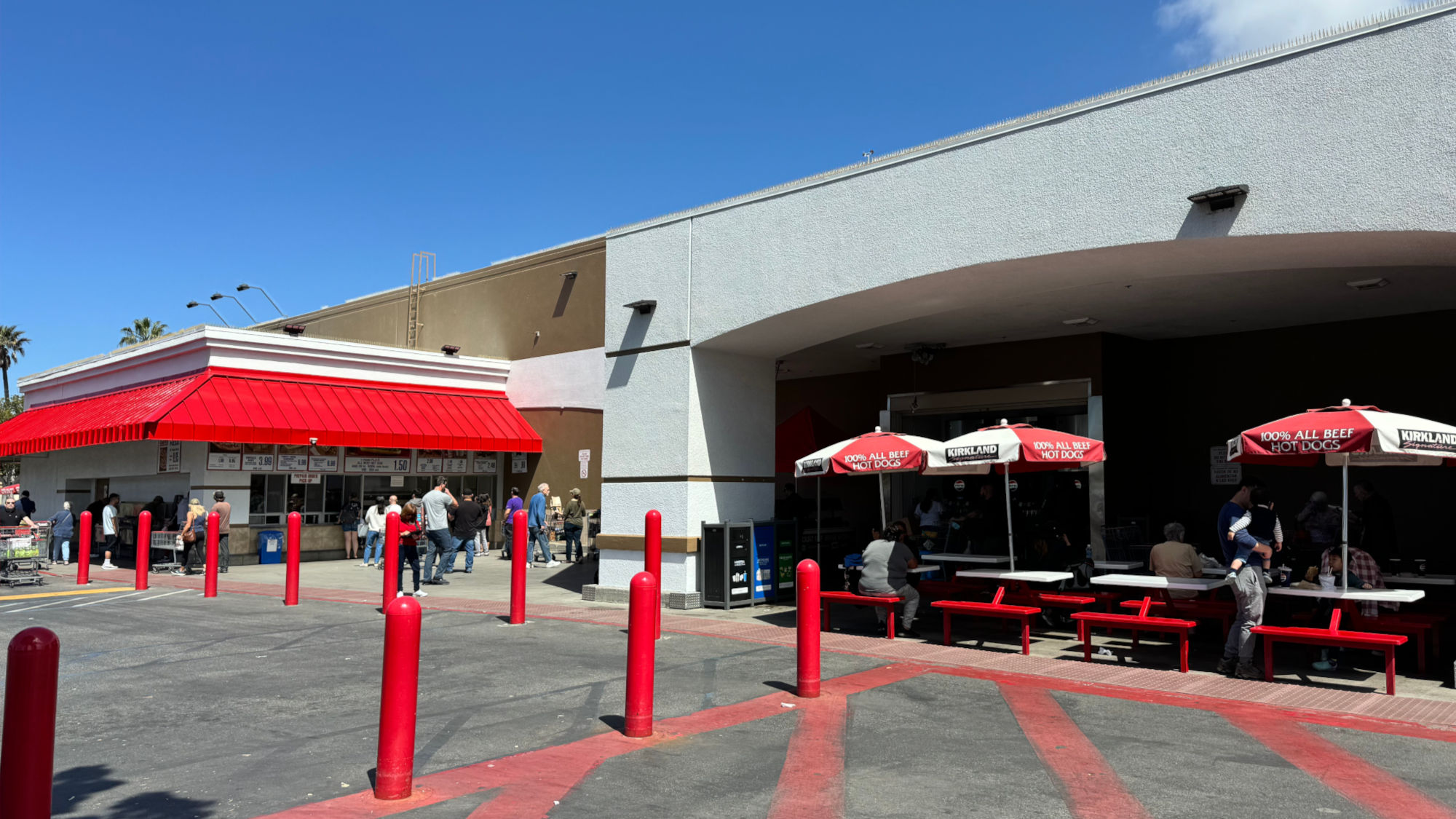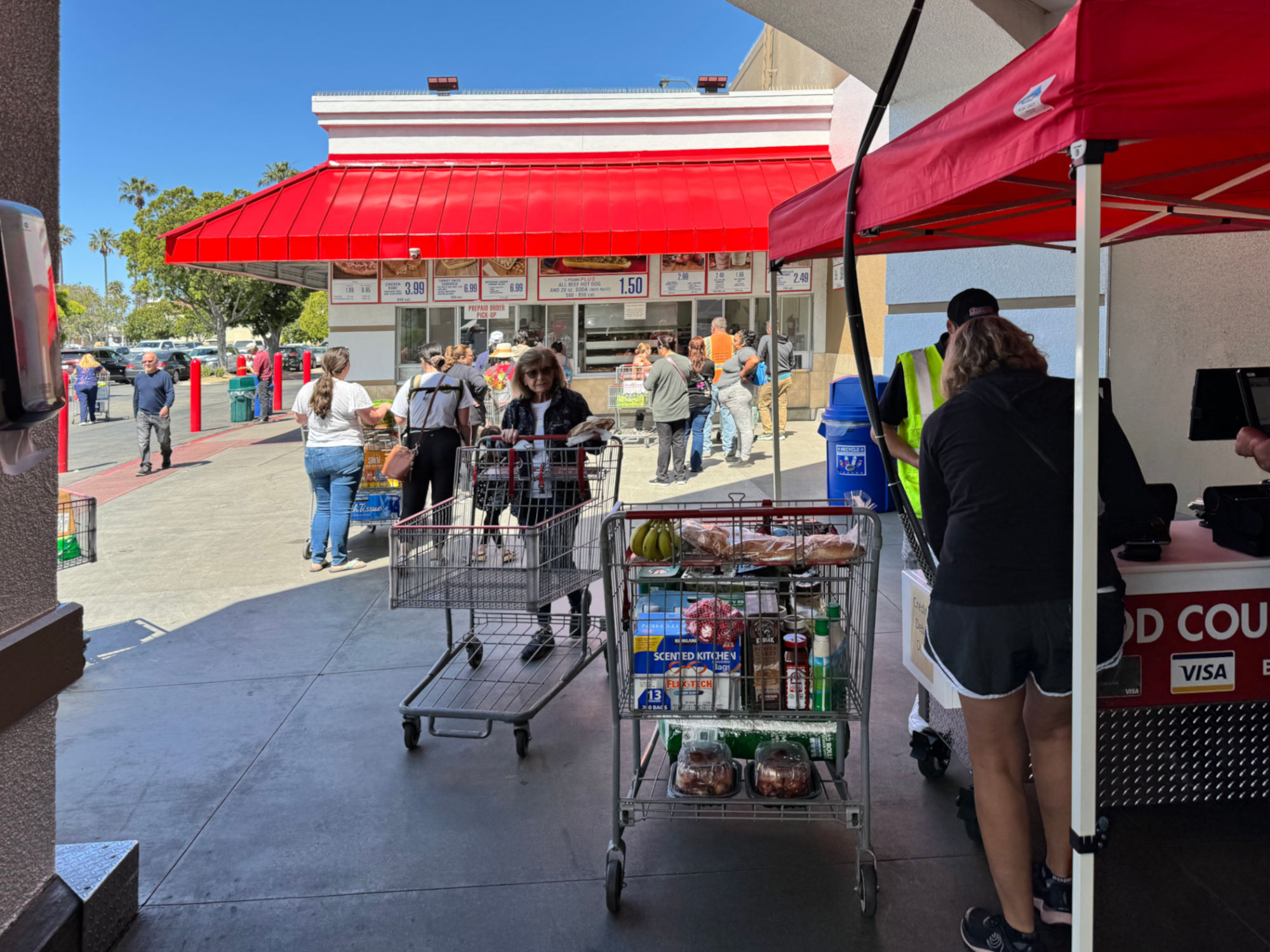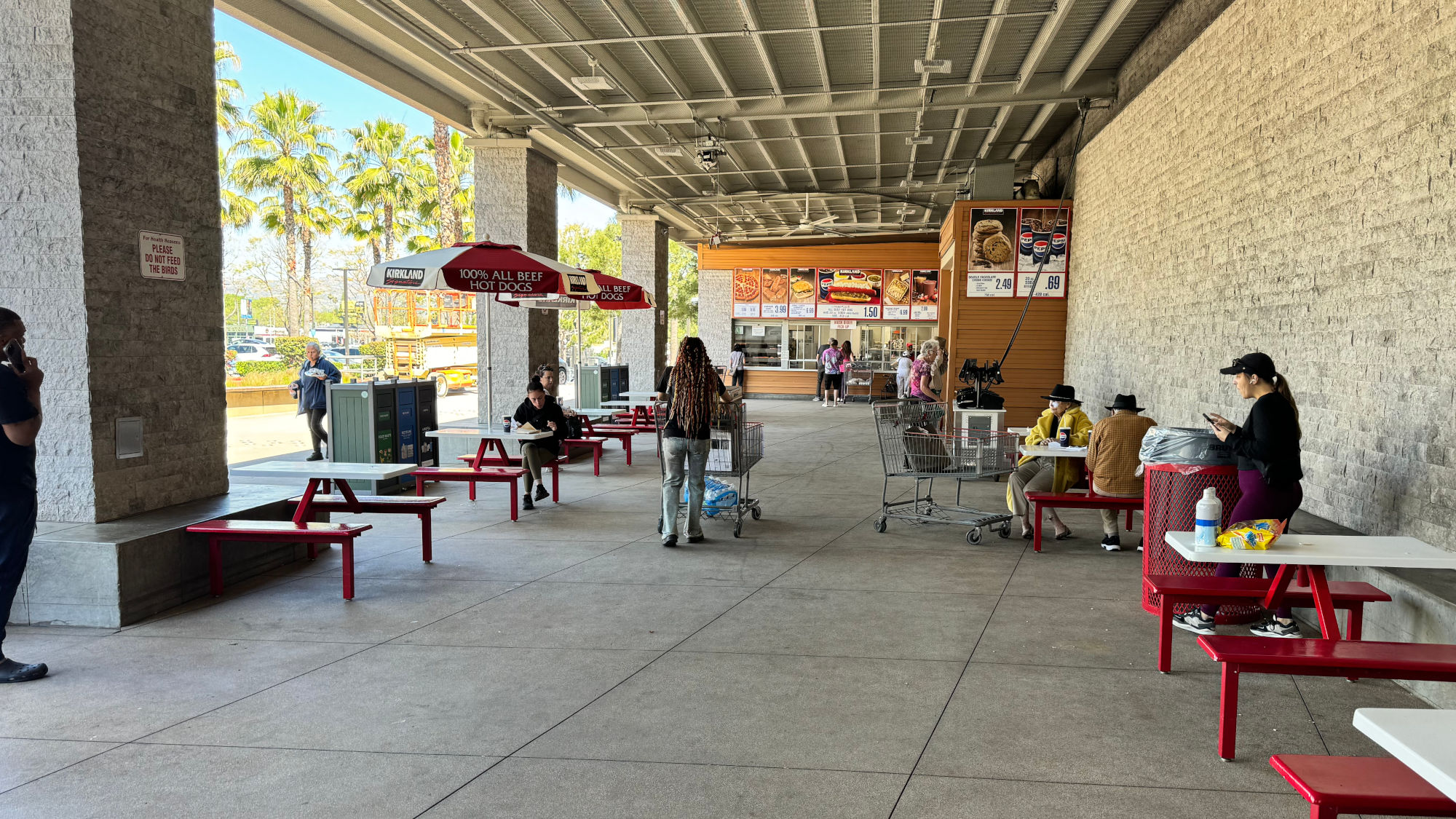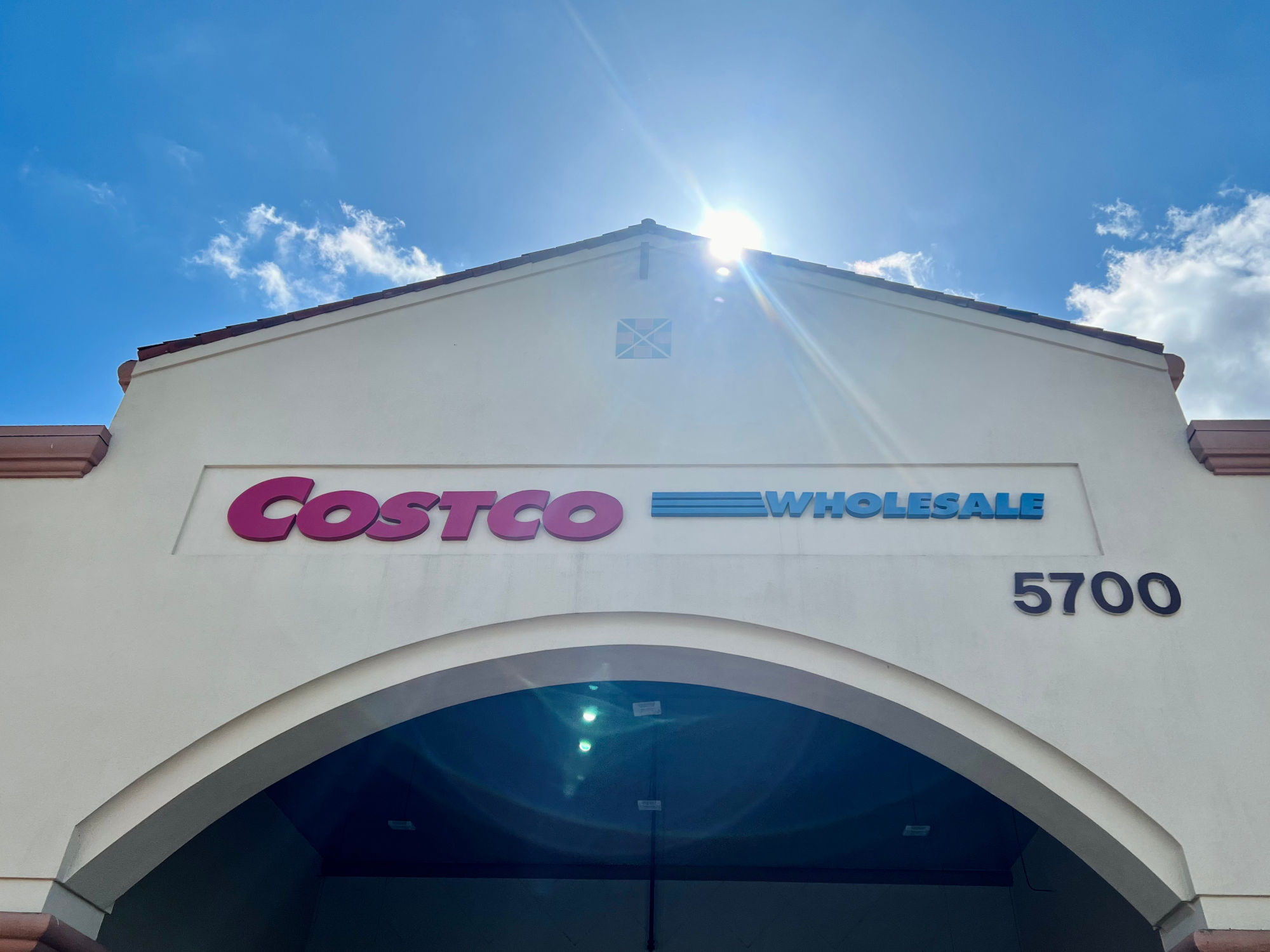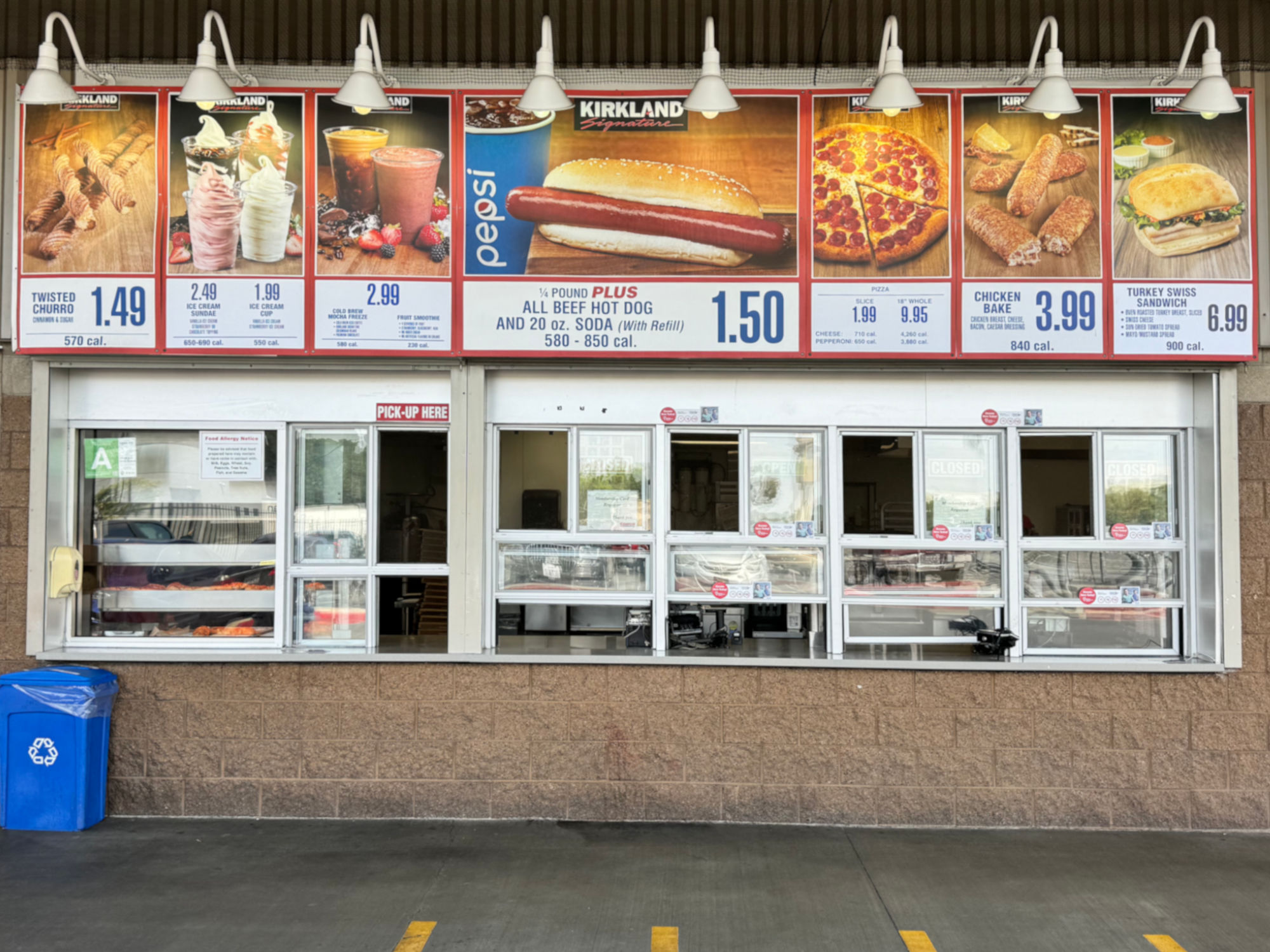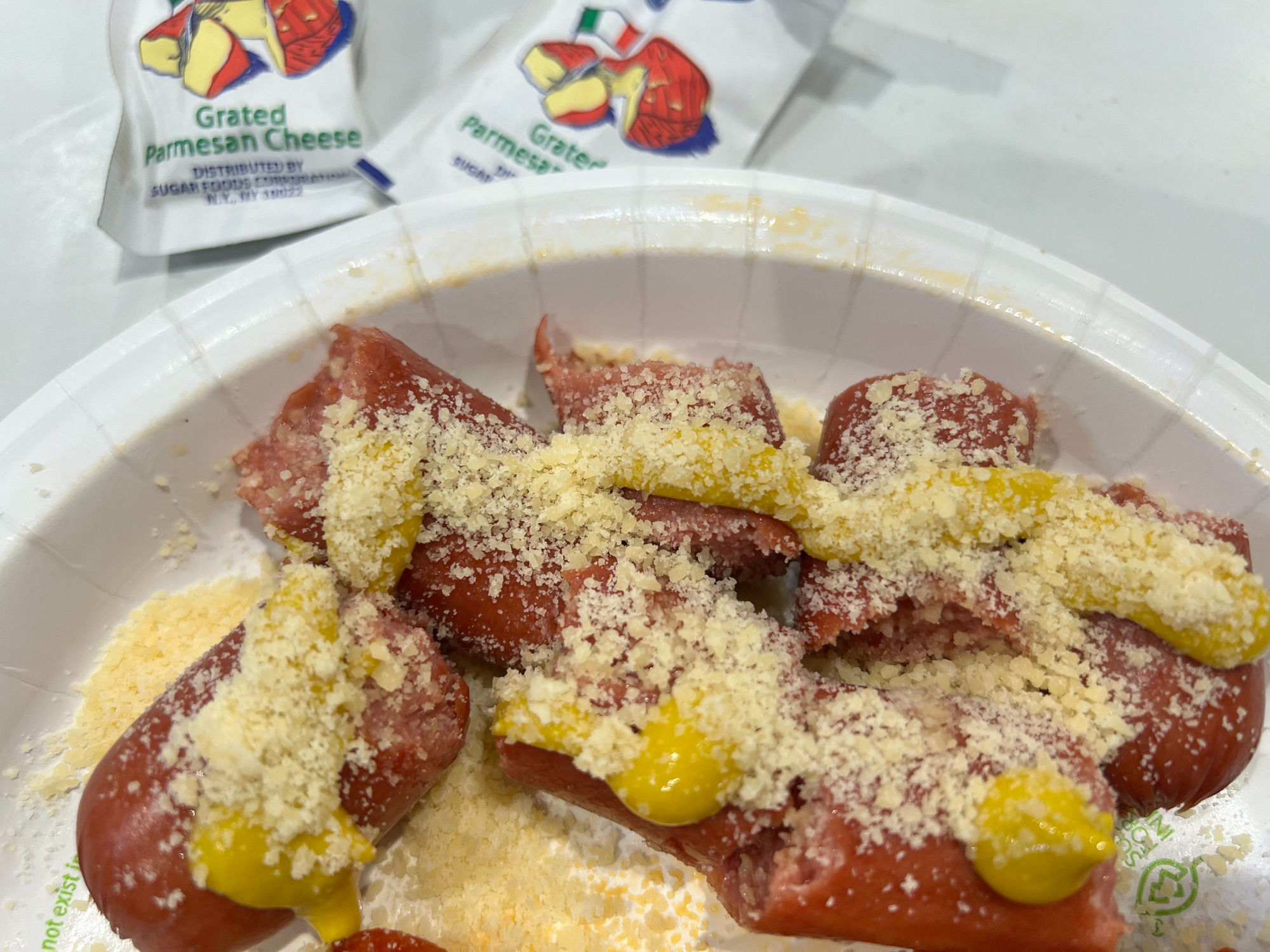They started to sell freshly prepared food through a hot dog cart at its original Seattle warehouse. Most Costco locations now have a food court. They can be indoors or outdoors, but the menu is essentially the same: hot dog with drink (one of the most popular items), pizza, frozen yogurt/ice cream, Pepsi beverages, baked items, and sandwiches.

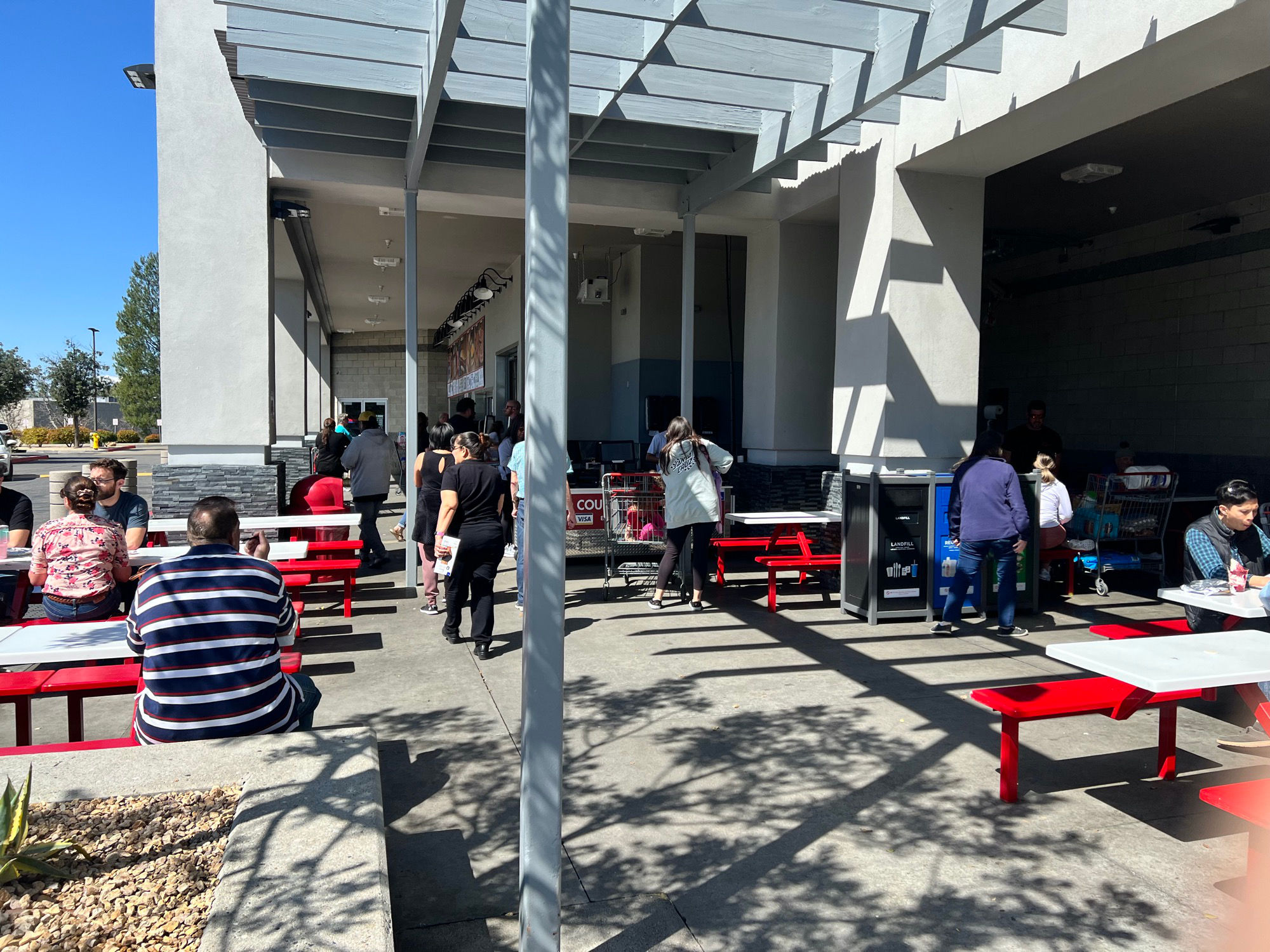
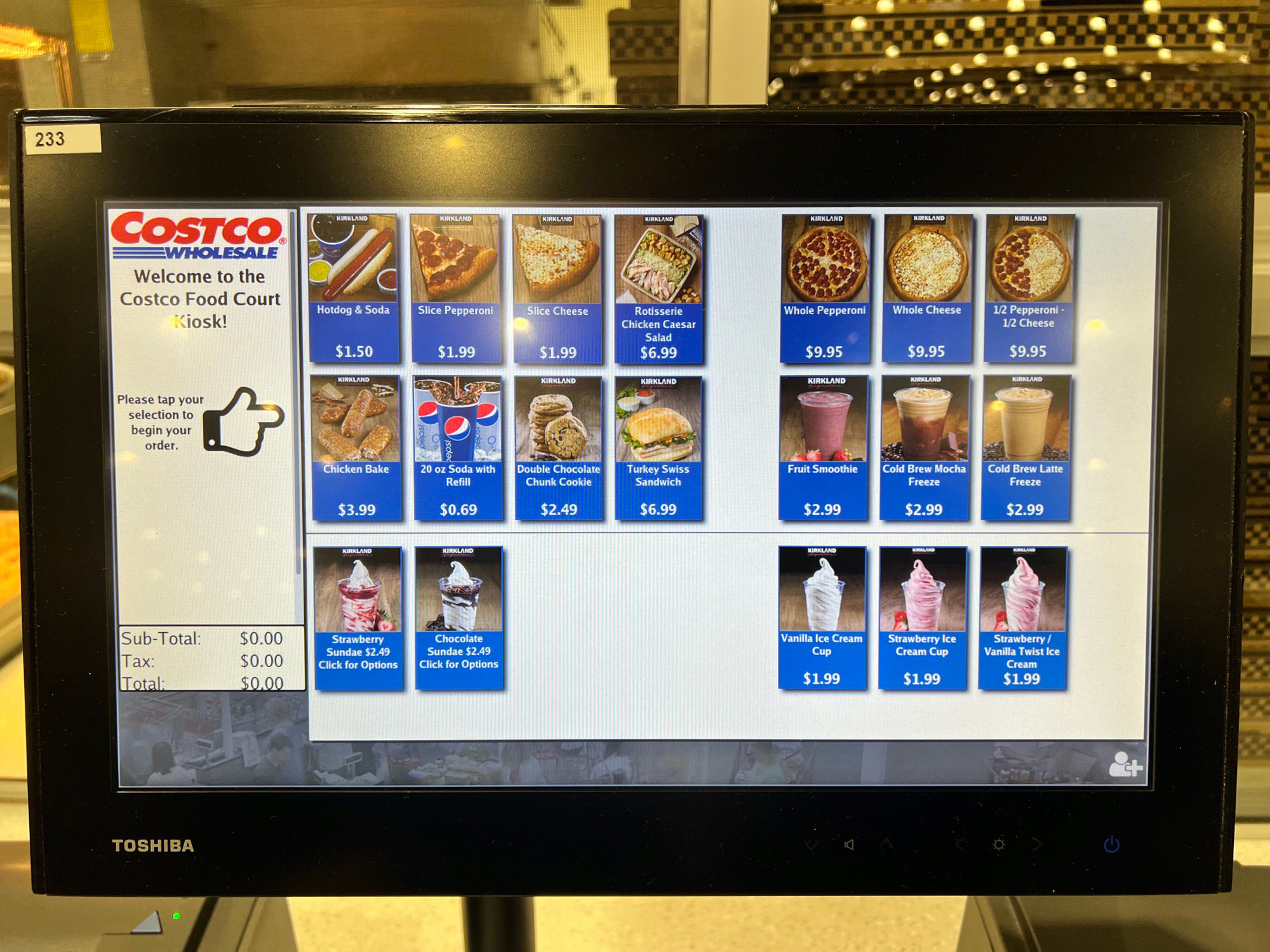
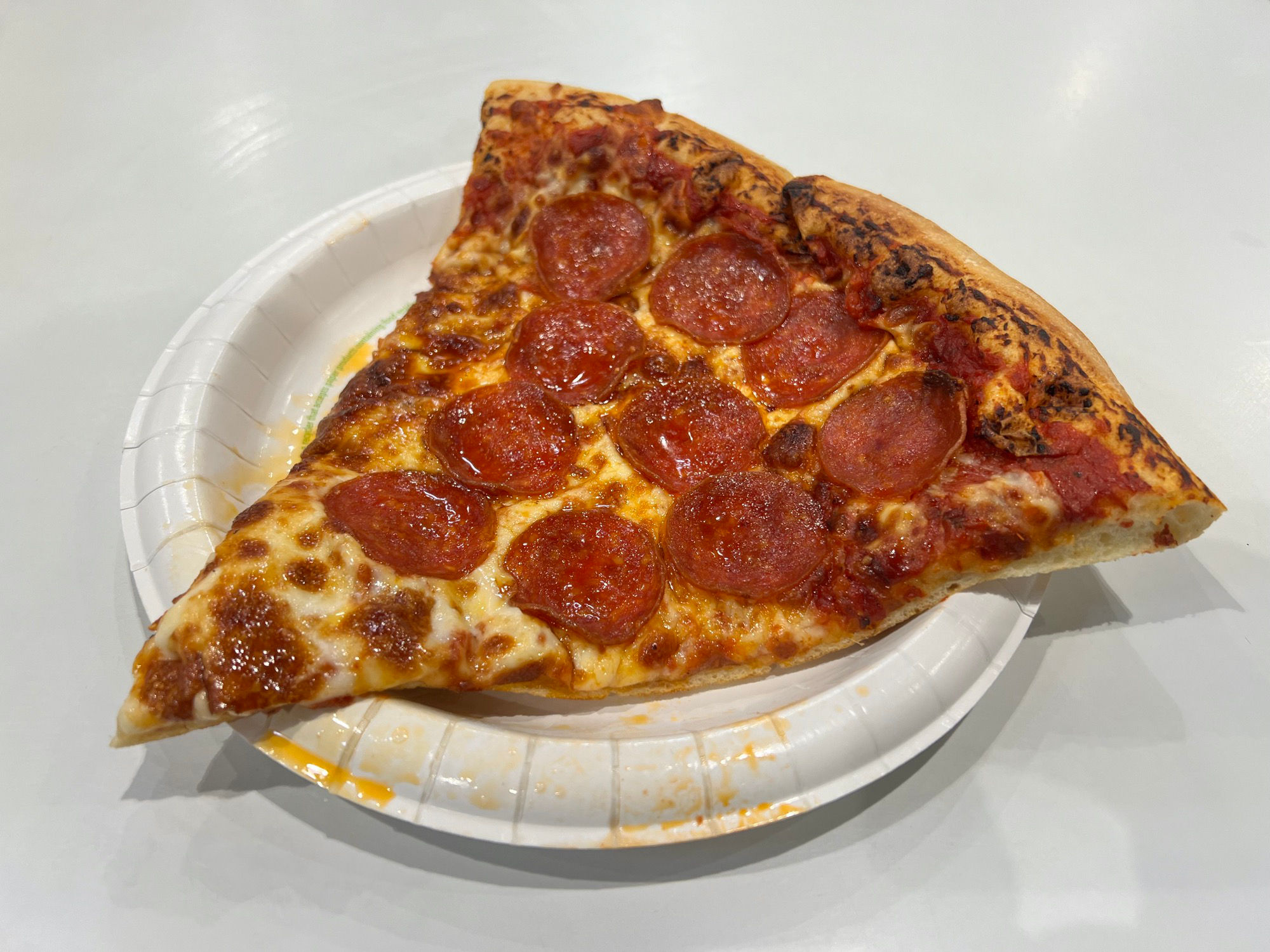
Pizza
- Pepperoni
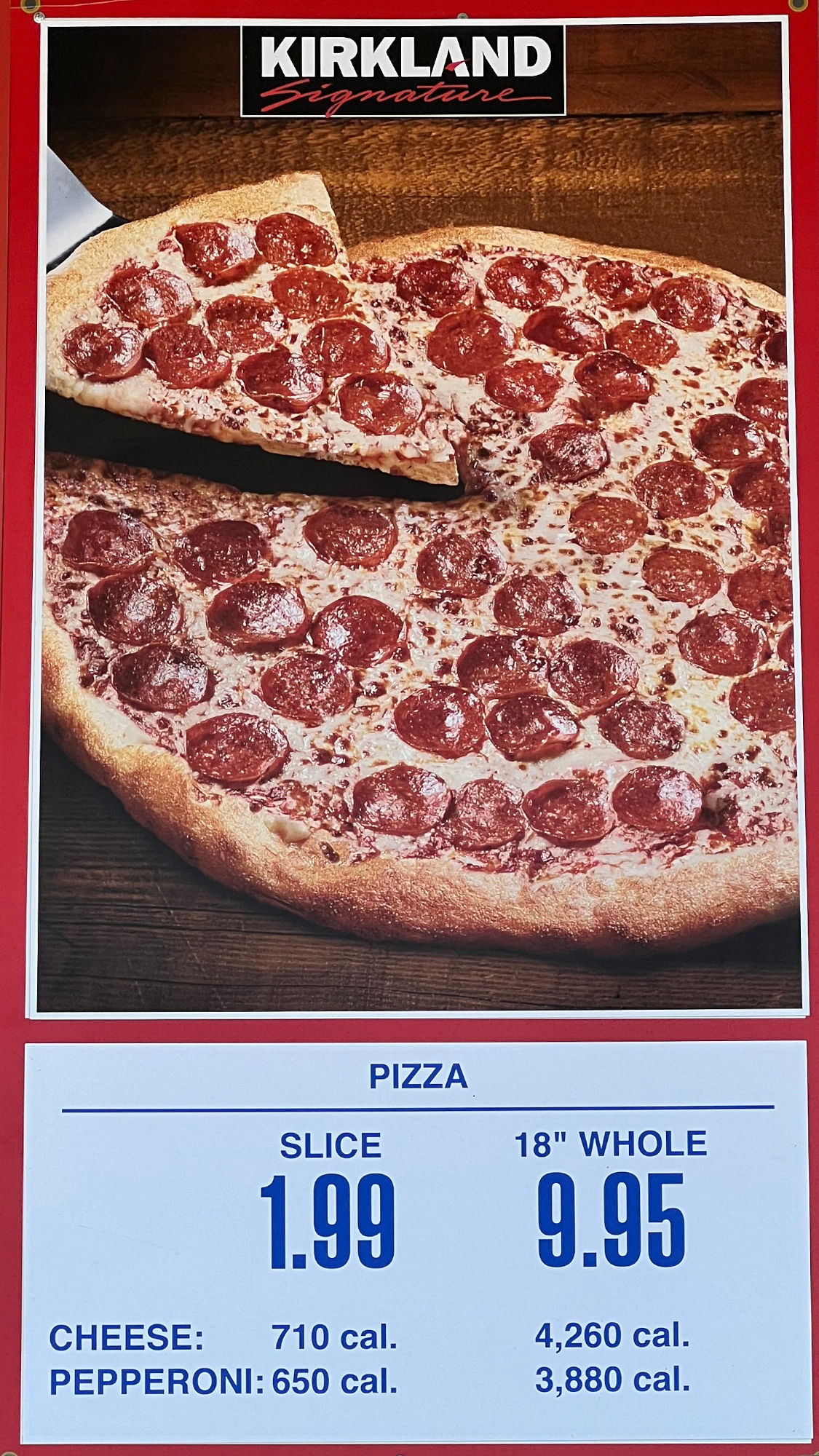

Chicken Bake
- Chicken Breast
- Cheese
- Bacon
- Caesar Dressing
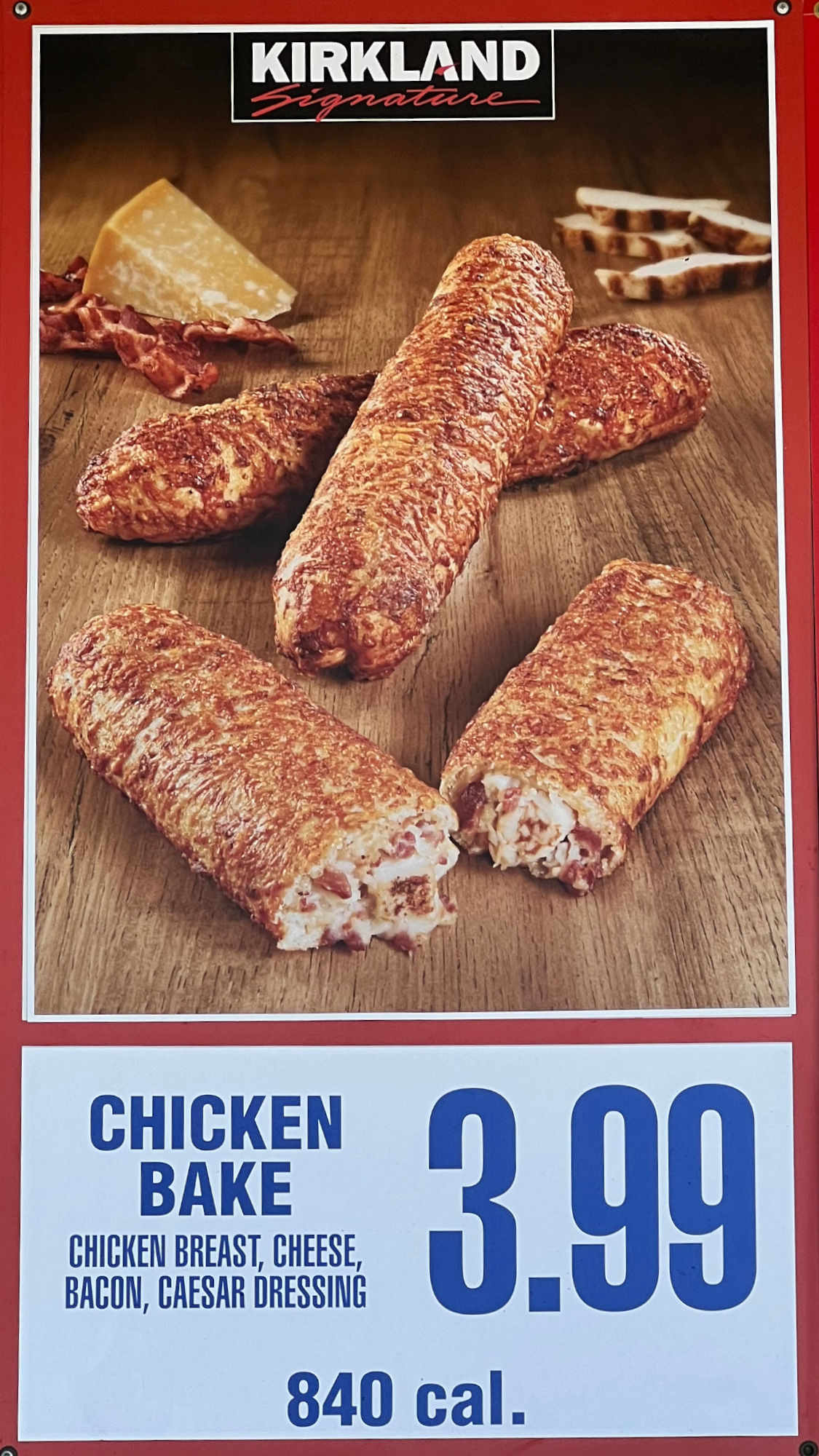

Turkey Swiss Sandwich
- Oven Roasted Turkey Breast, Sliced
- Swiss Cheese
- Sun-Dried Tomato Spread
- Mayo/Mustard Spread
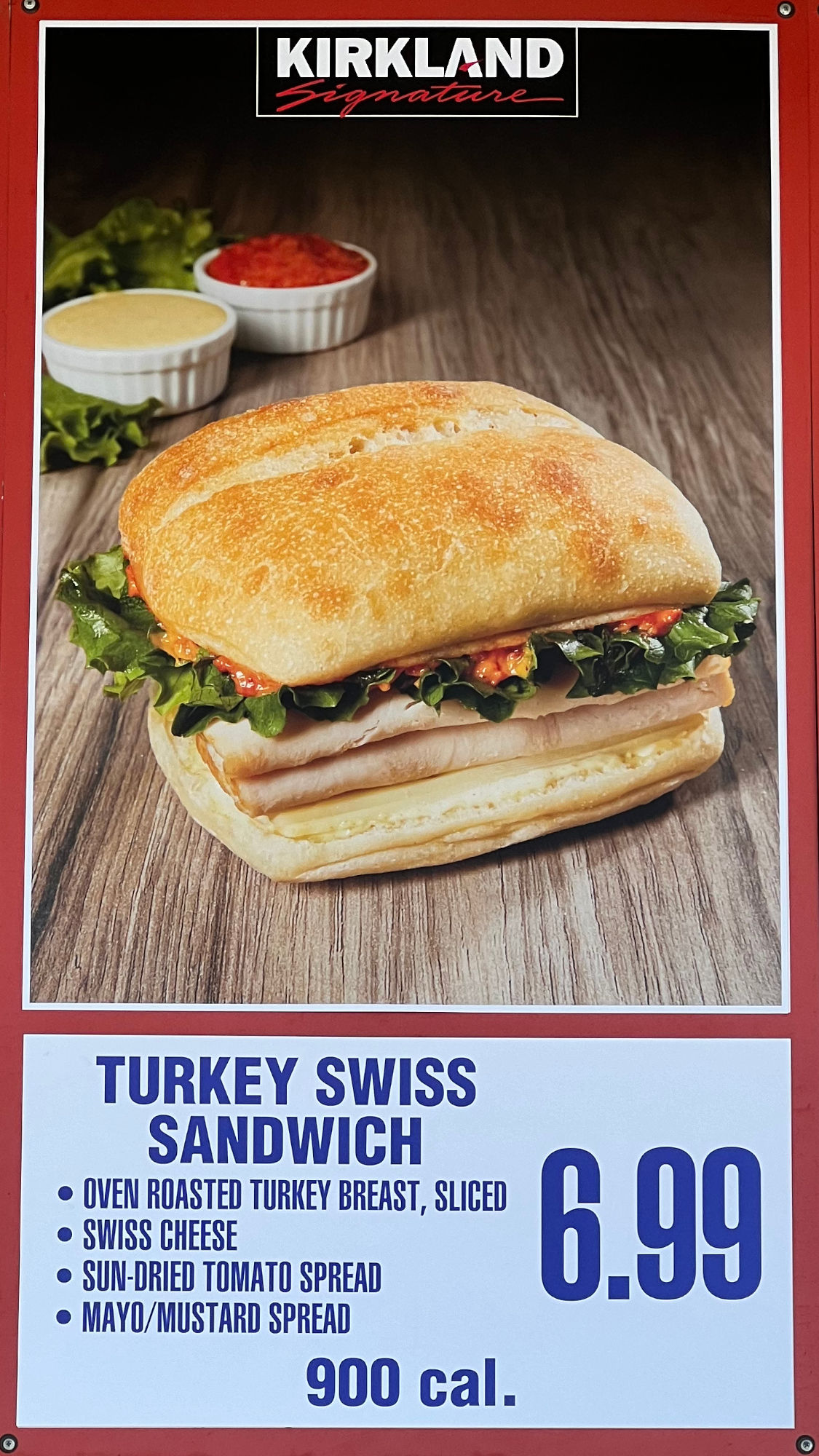
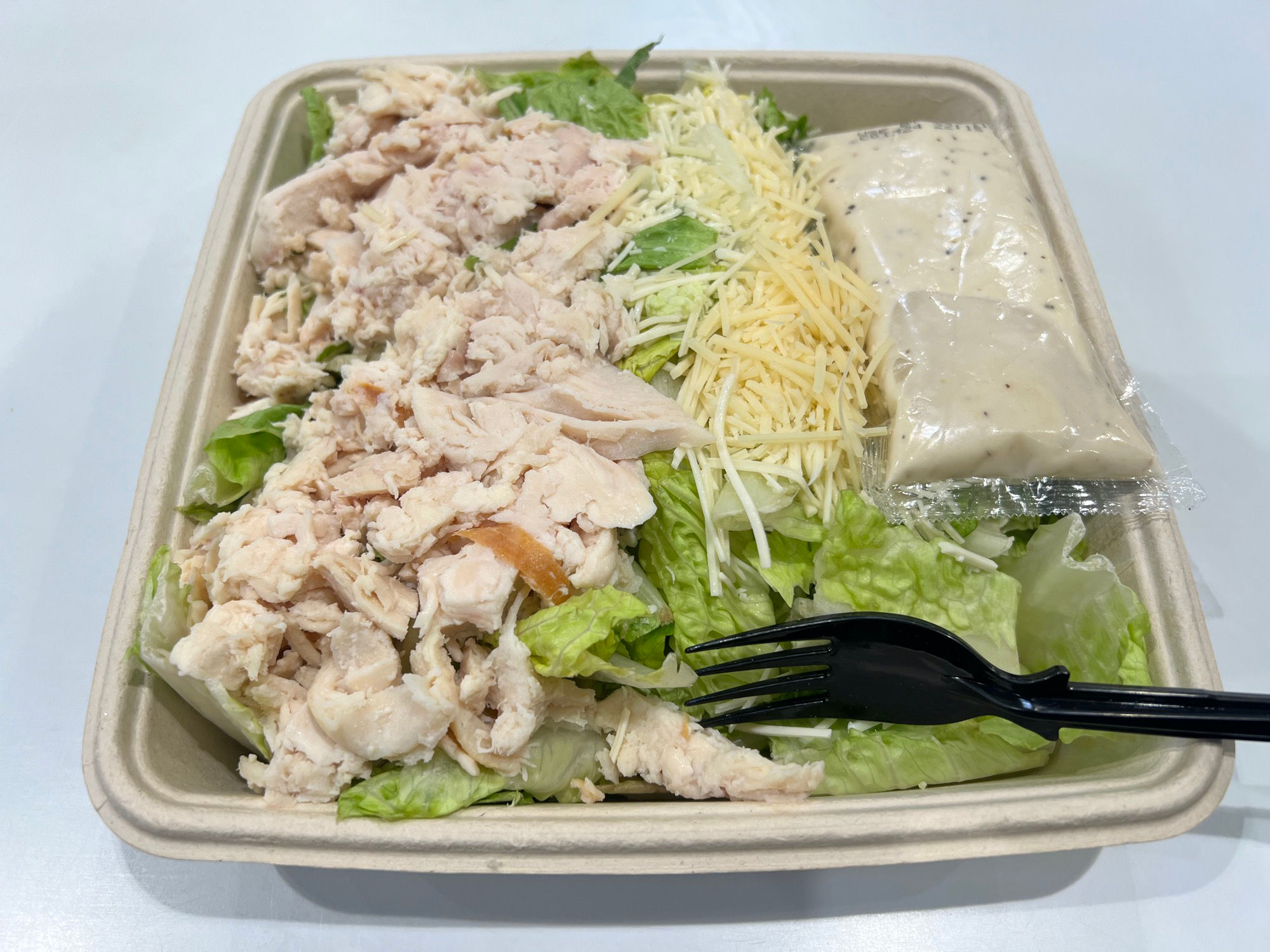
Rotisserie Chicken
Caesar Salad
- Rotisserie Chicken Breast
- Romaine
- Parmesan Cheese
- Creamy Caesar Dressing
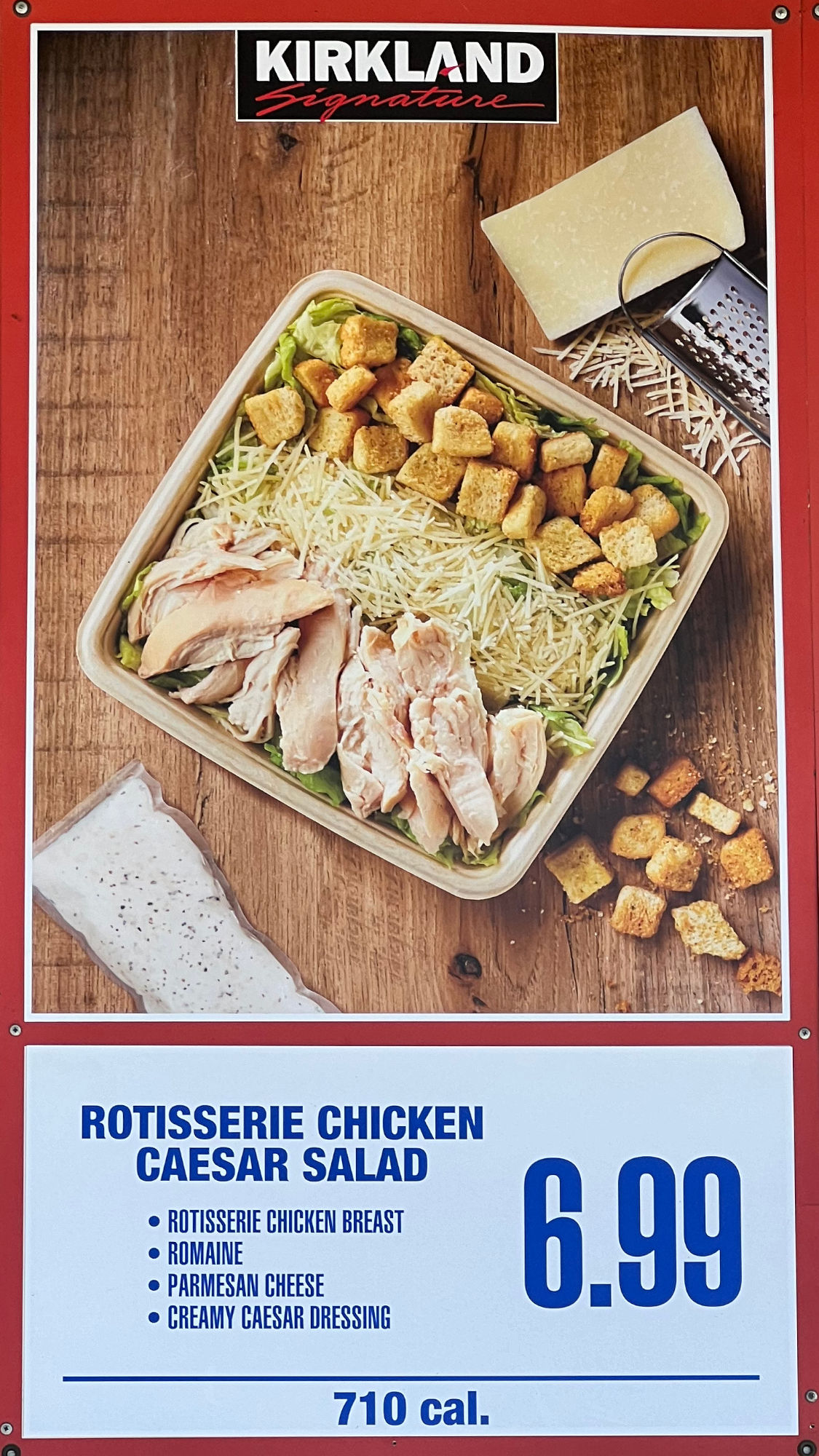
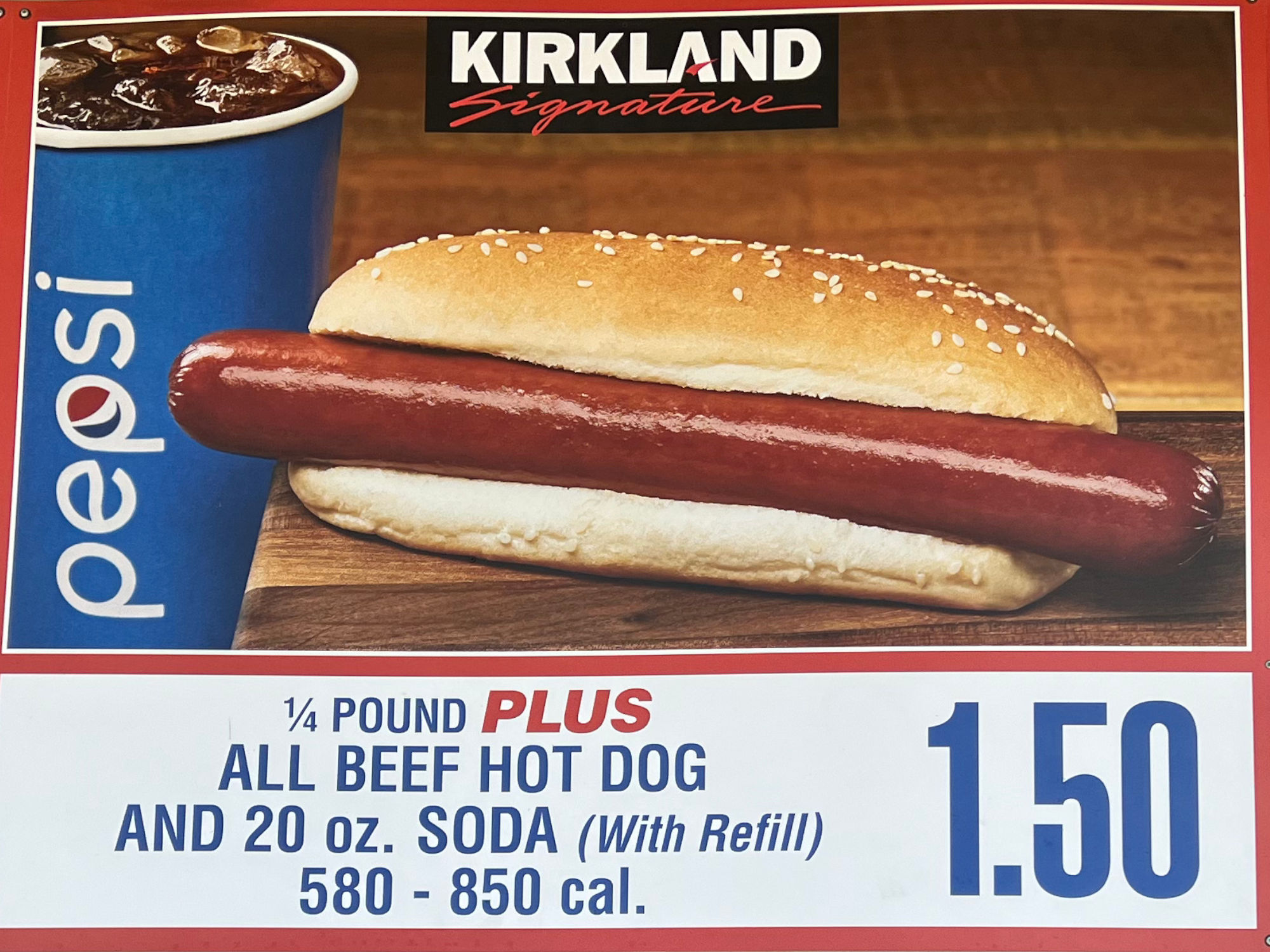
All Beef Hot Dog
- 1/4 Pound All Beef Hot Dog
- 20 Ounce Soda
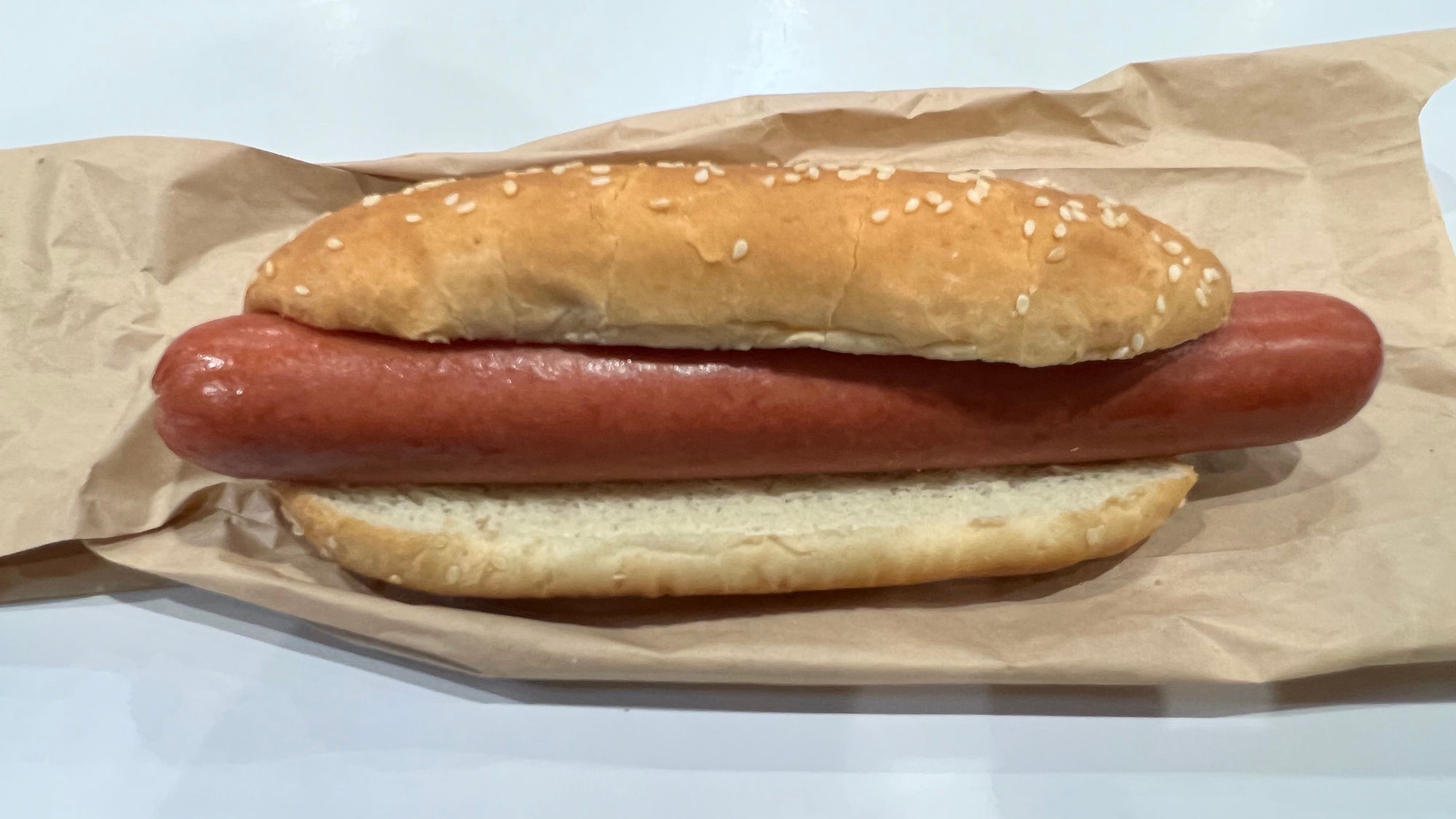
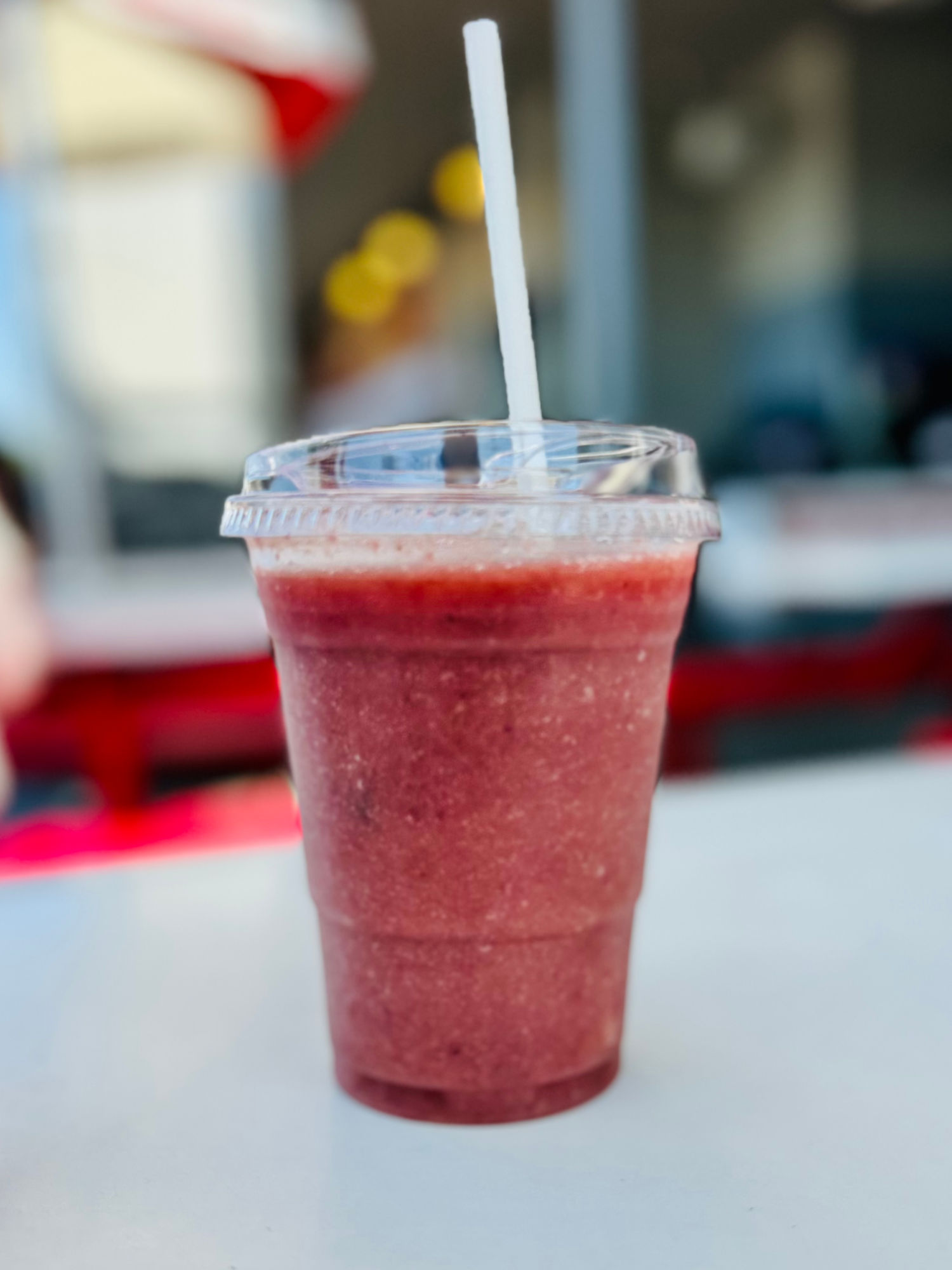
Fruit Smoothie
- Strawberry
- Blackberry
- Acai
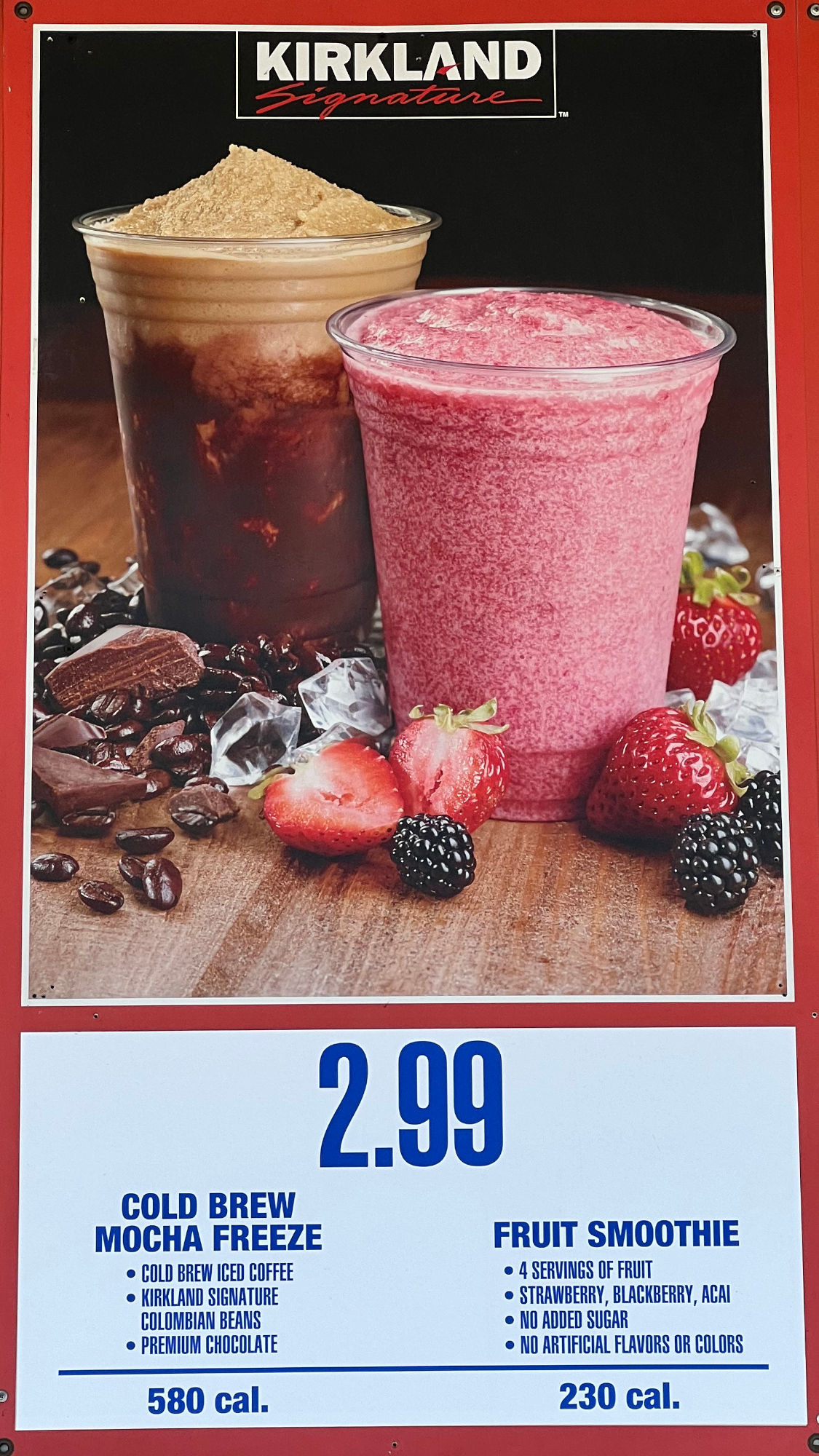
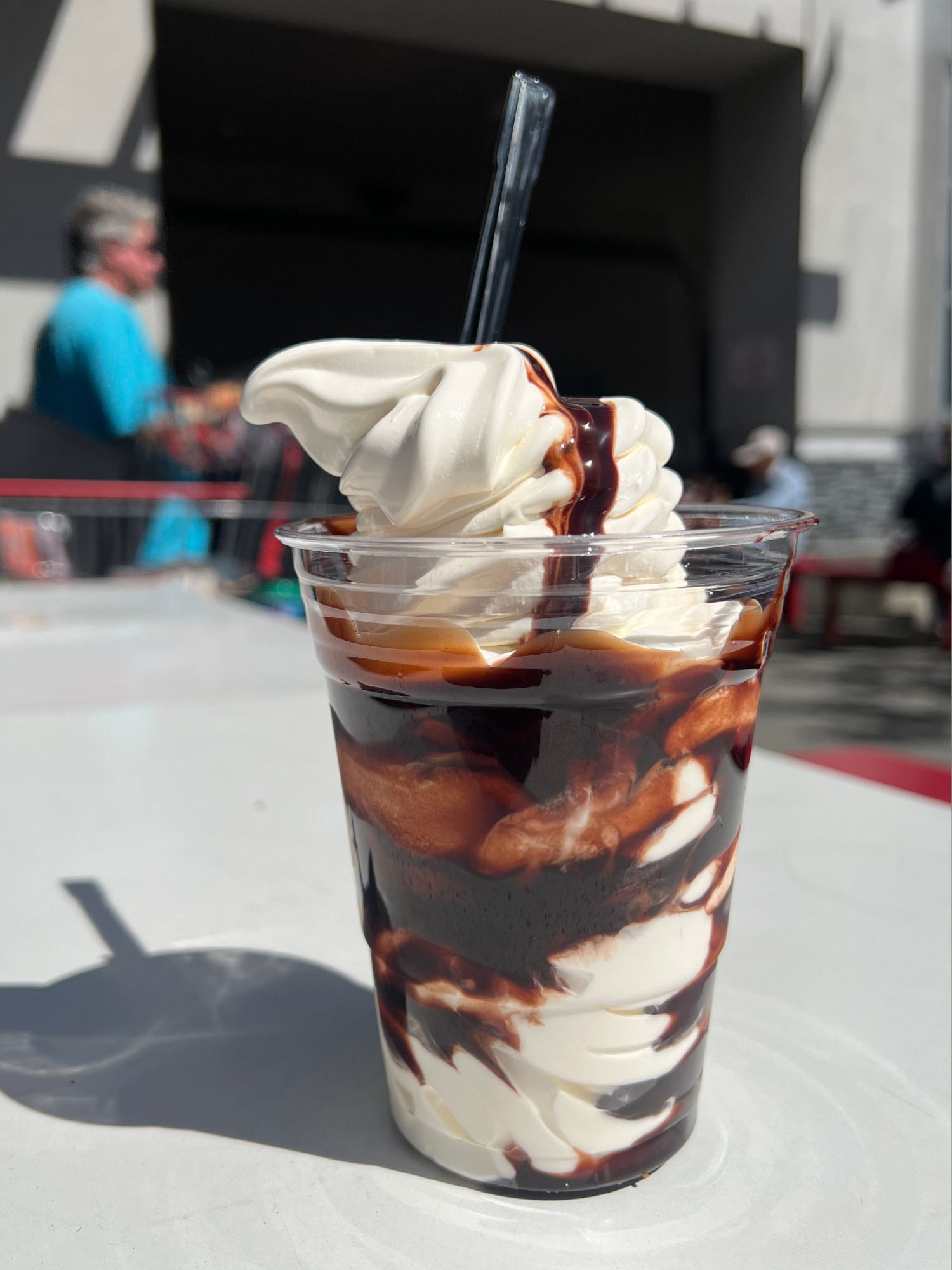
Ice Cream Sundae
- Vanilla Ice Cream
- Chocolate Topping
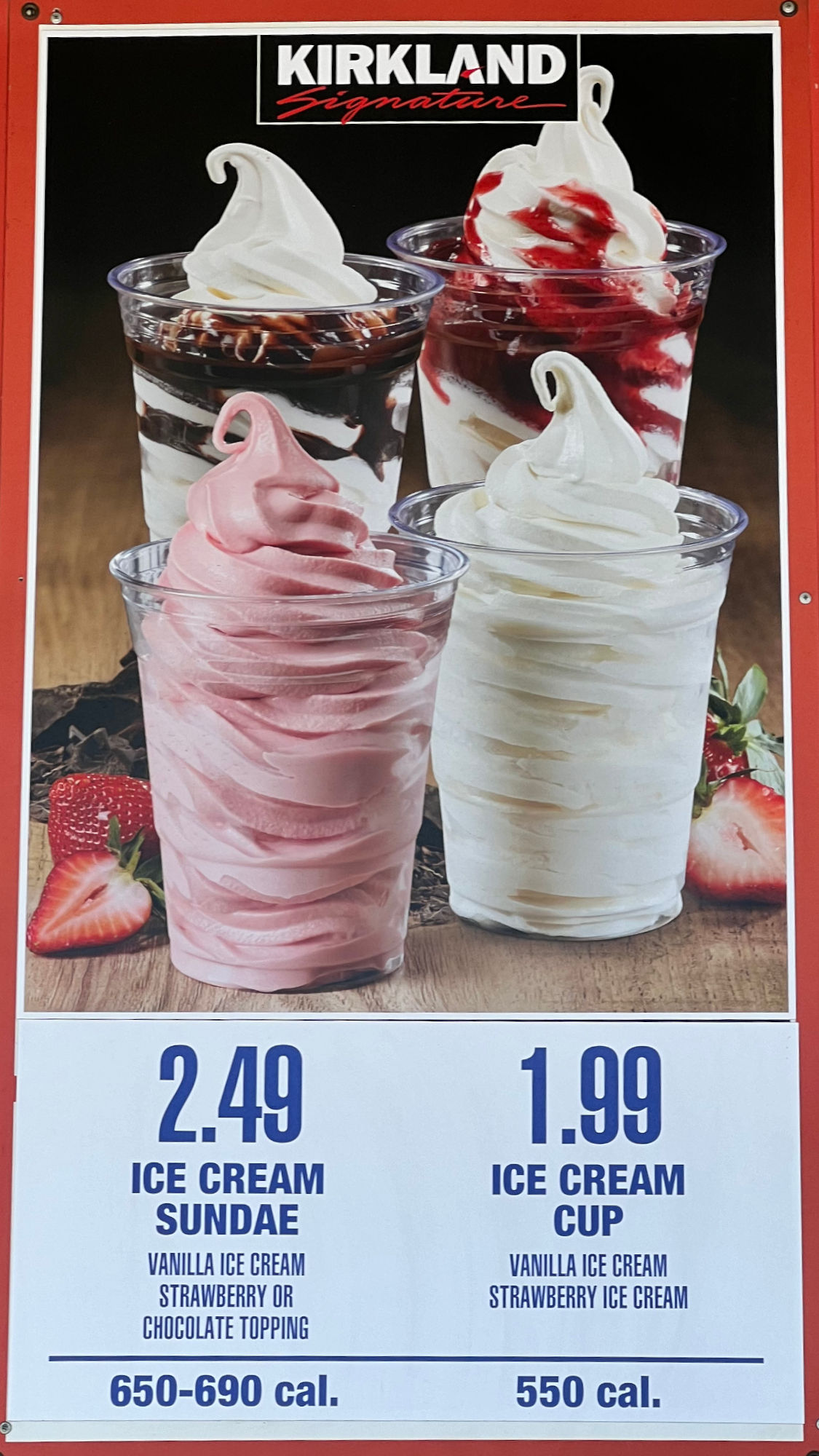

Double Chocolate Chunk Cookie
- All Butter
- Bittersweet & Semi Sweet Chocolate
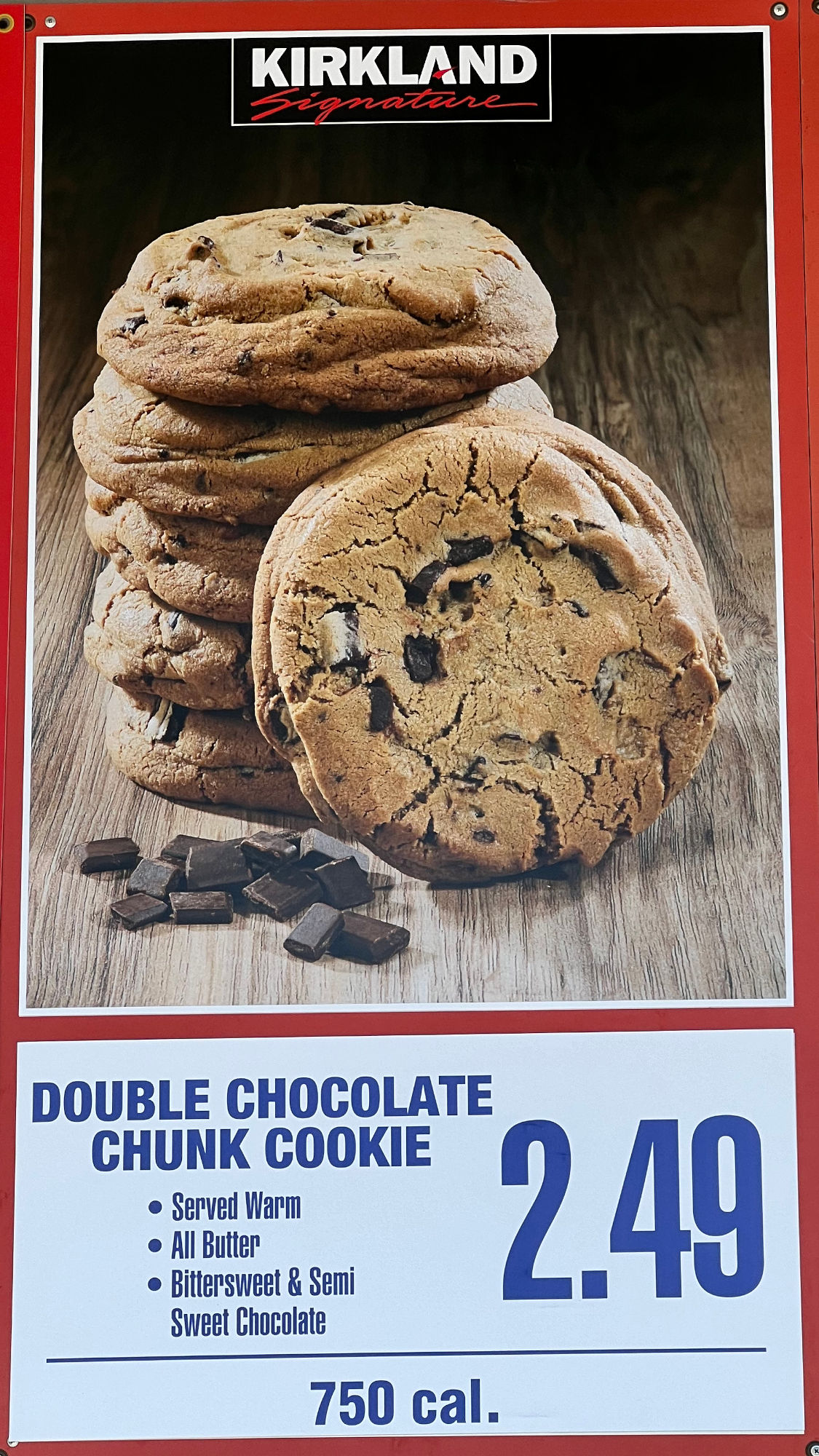
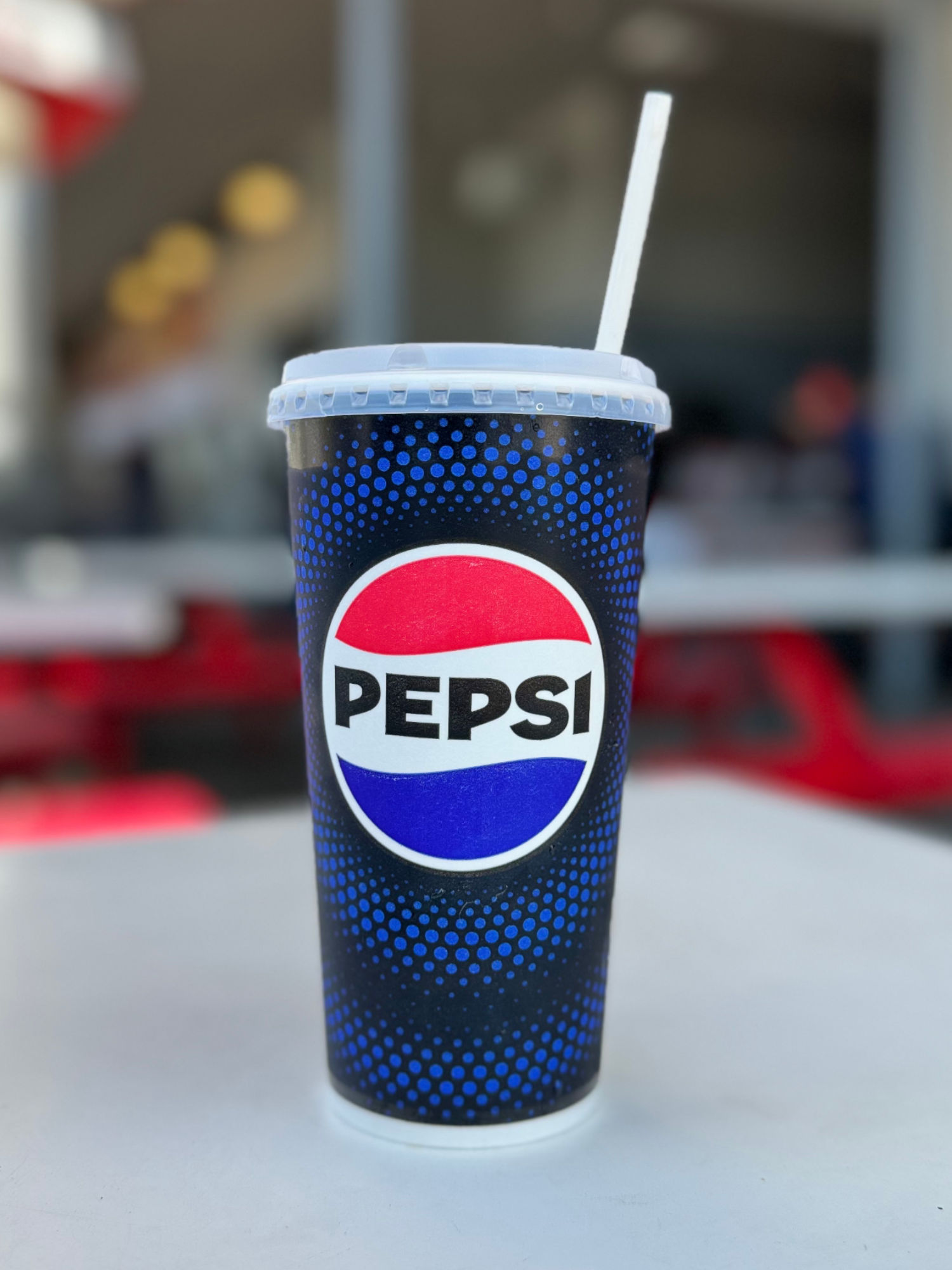
Pepsi
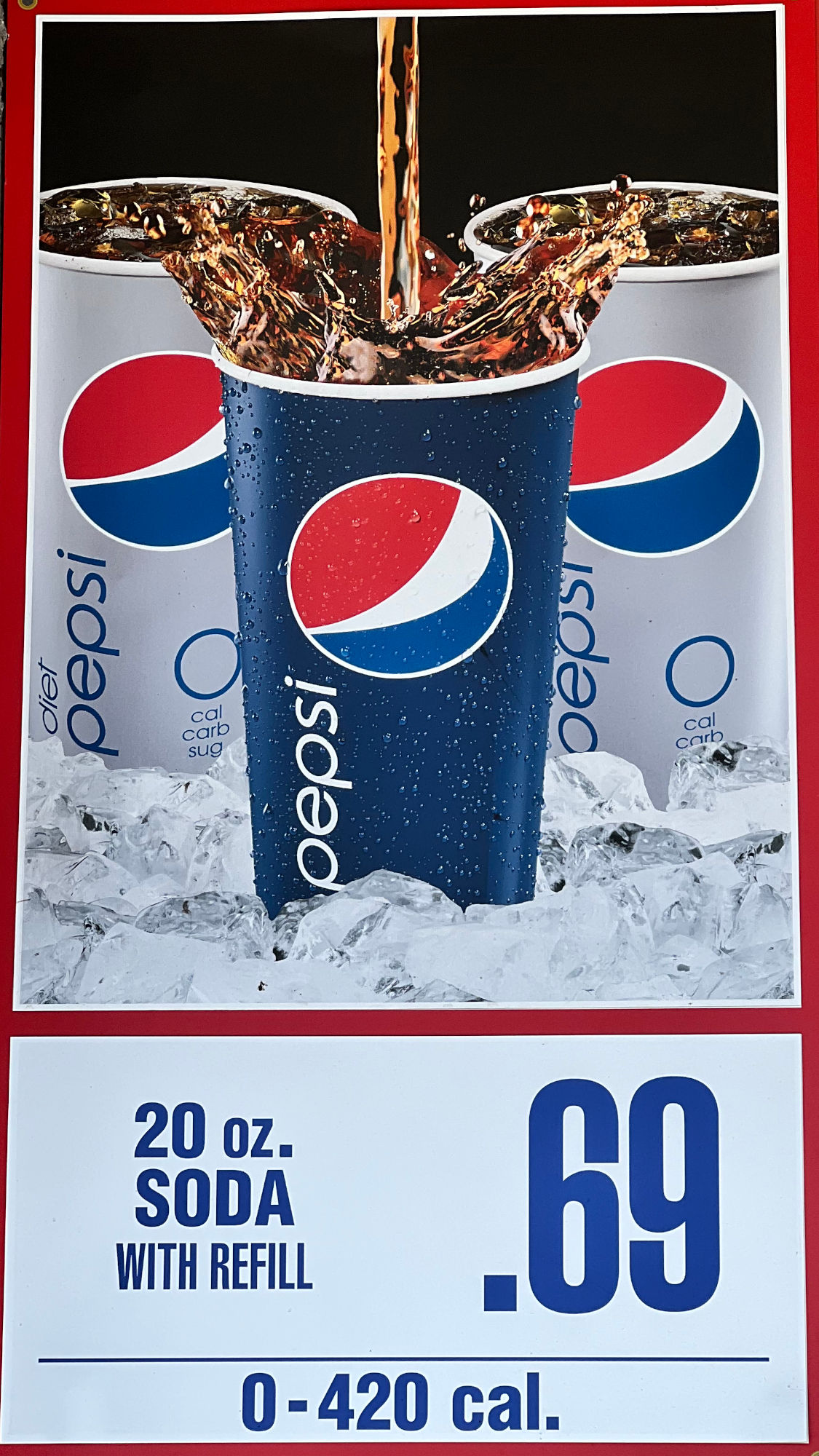
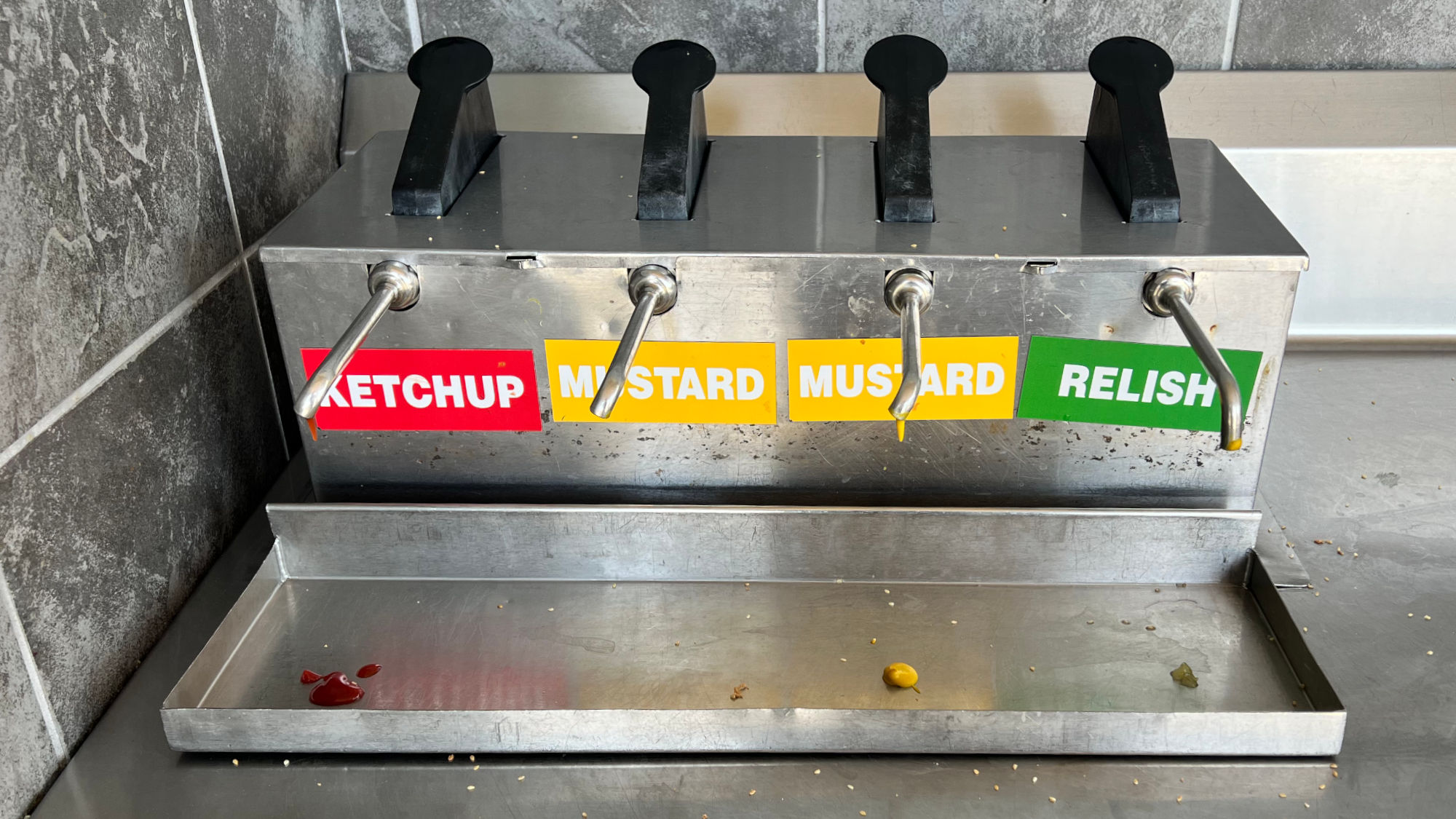
Condiments
- Ketchup
- Mustard
- Mustard
- Relish
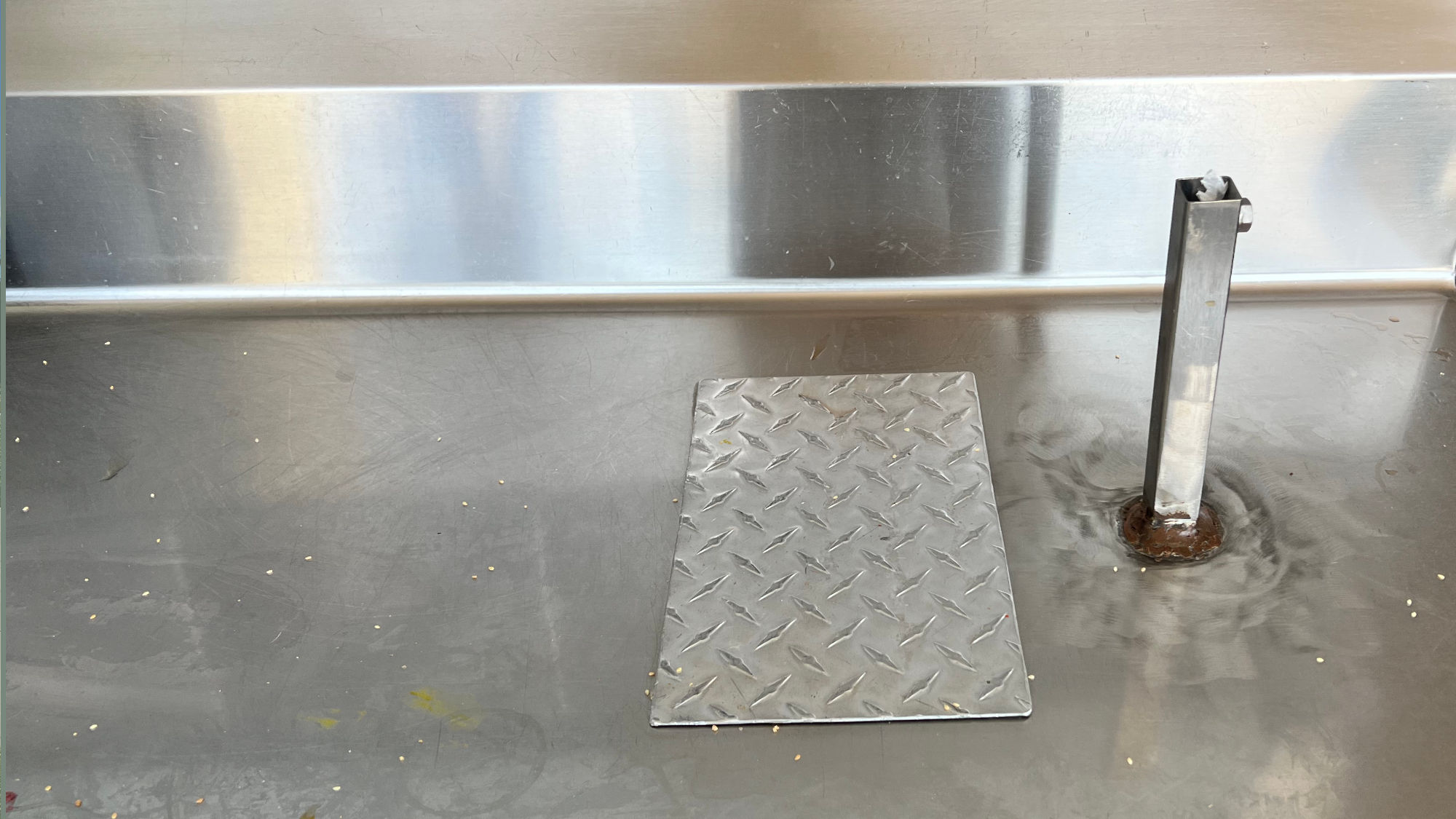
Chopped Diced Onions
- They are in individual plastic containers in a fridge behind the counter you have to ask for them.
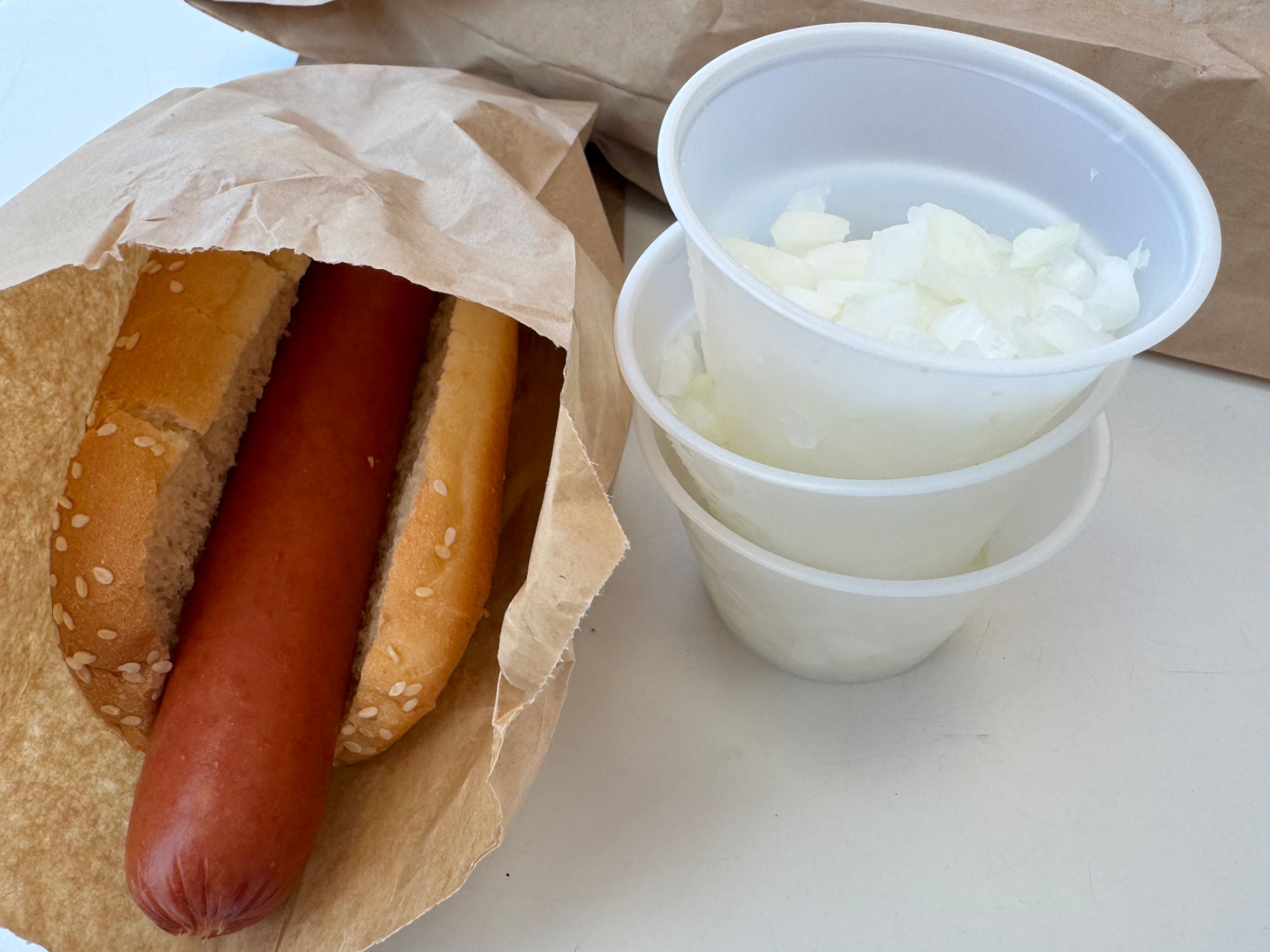
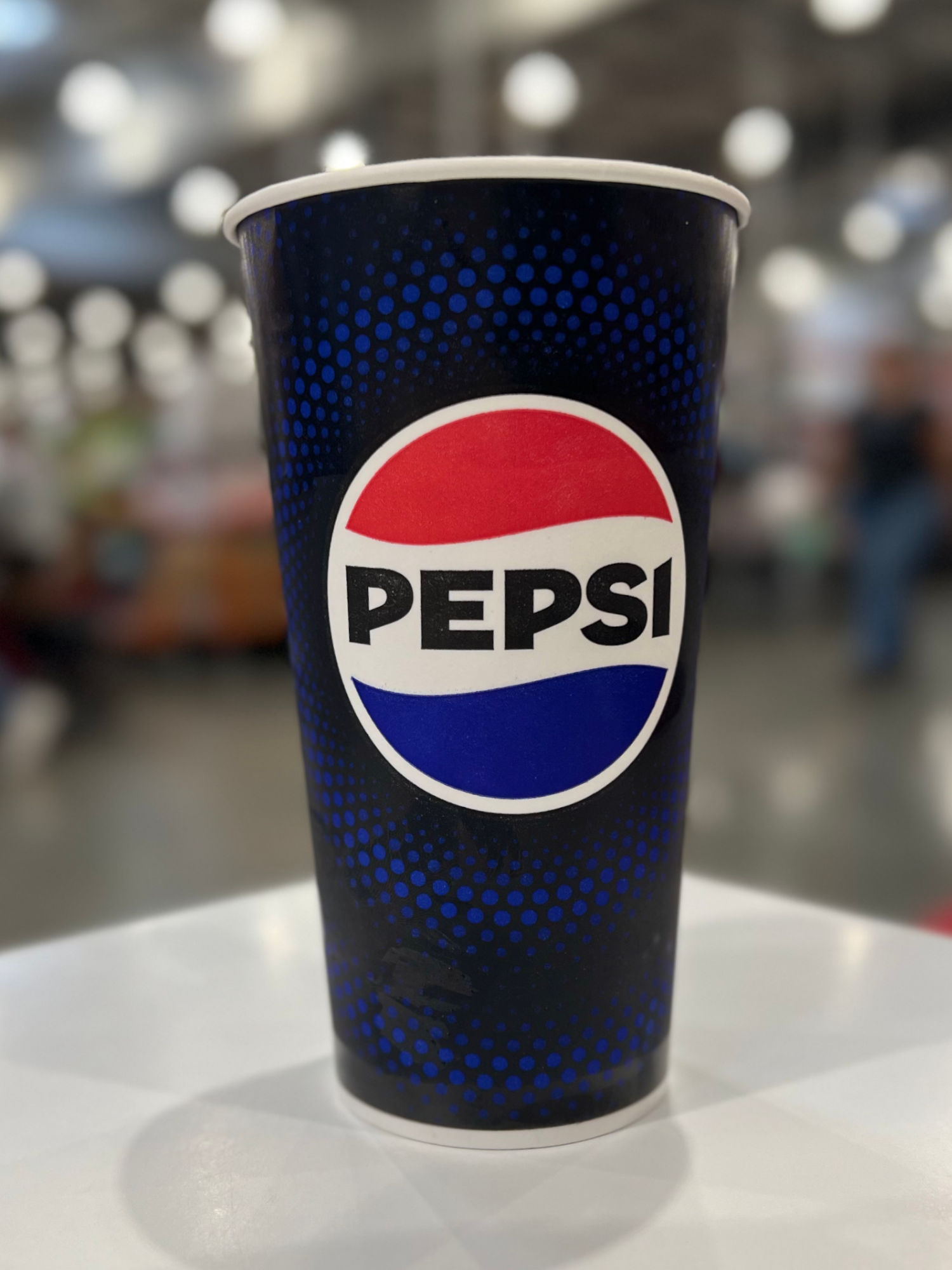
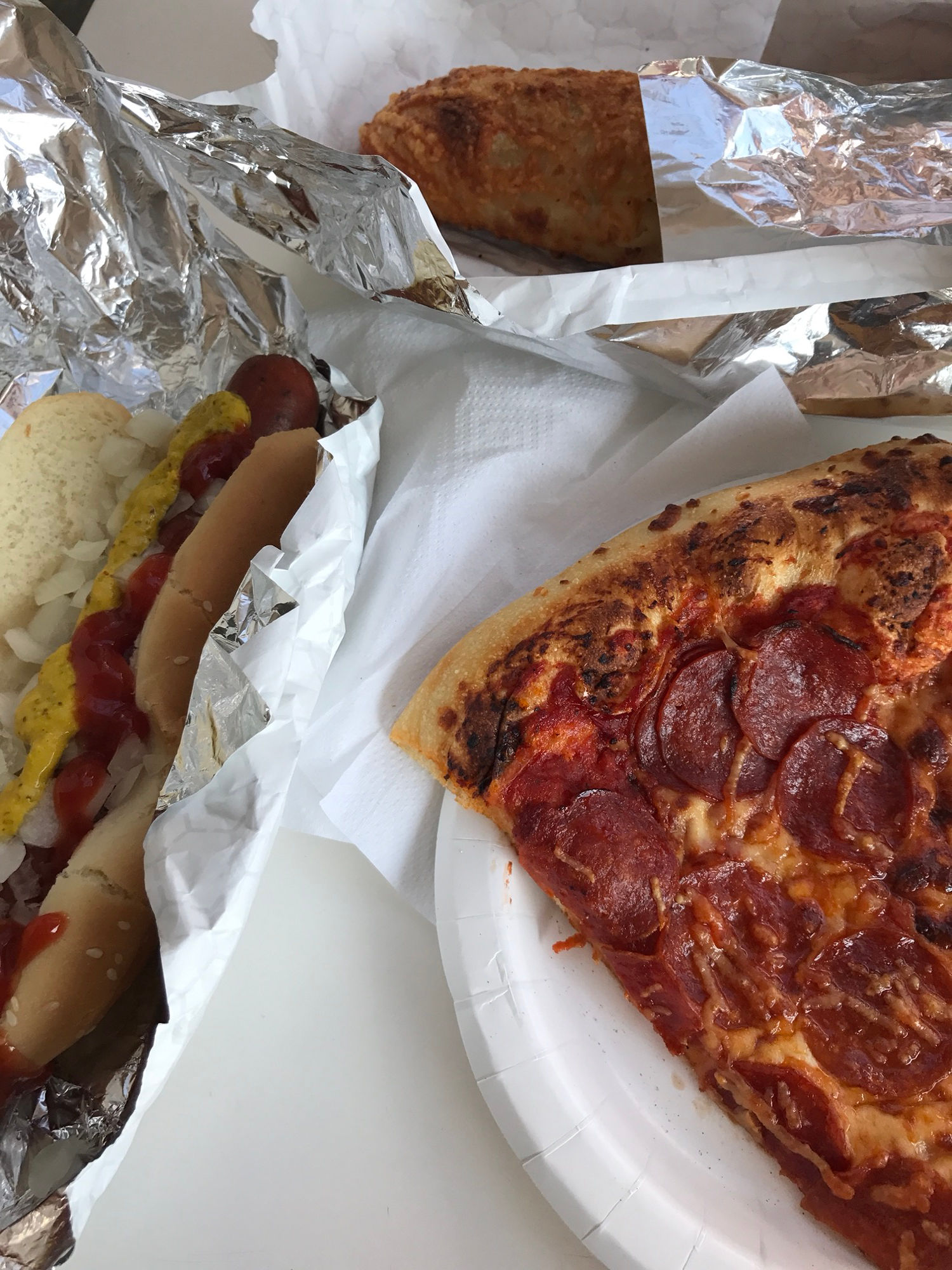
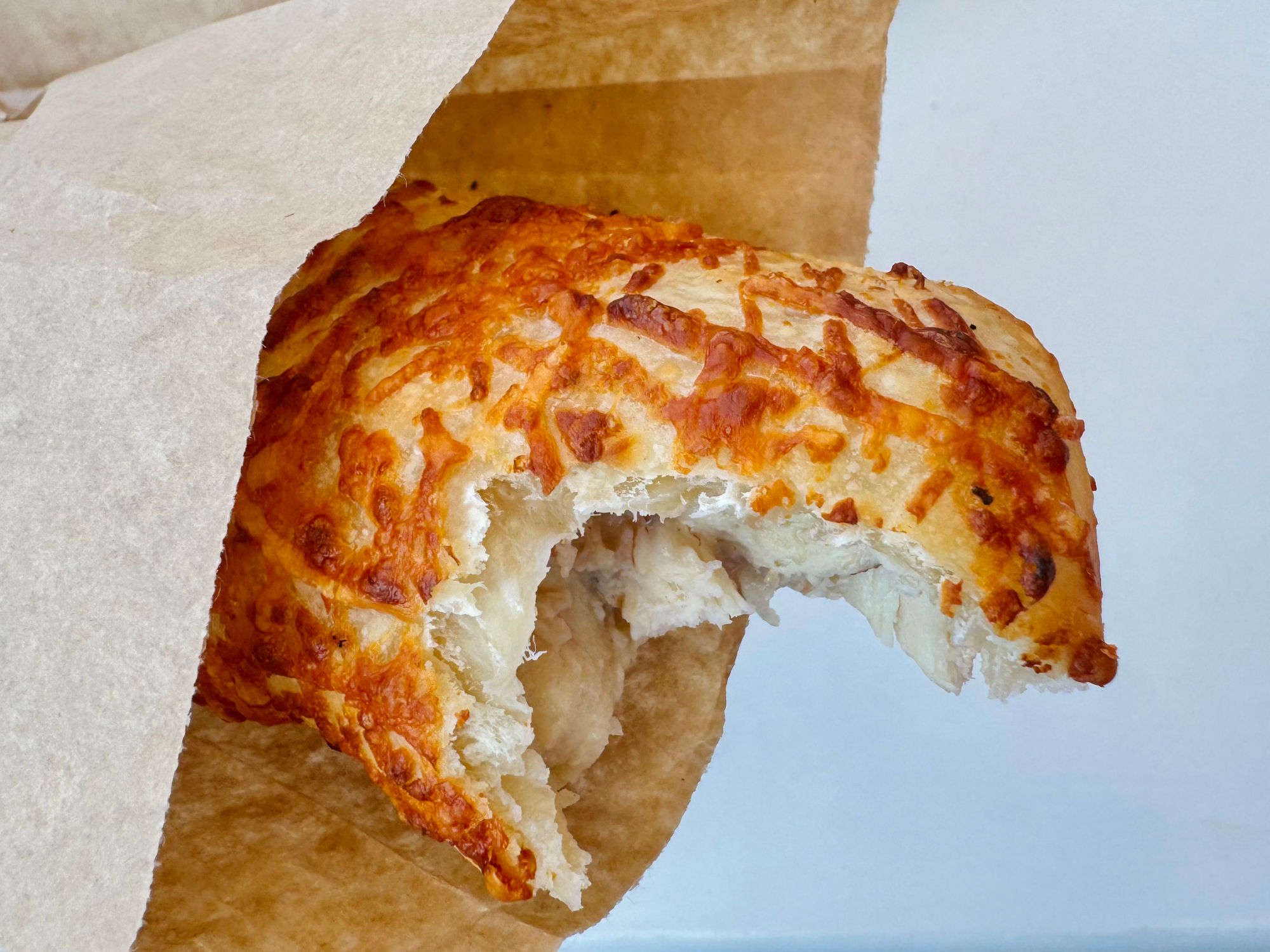
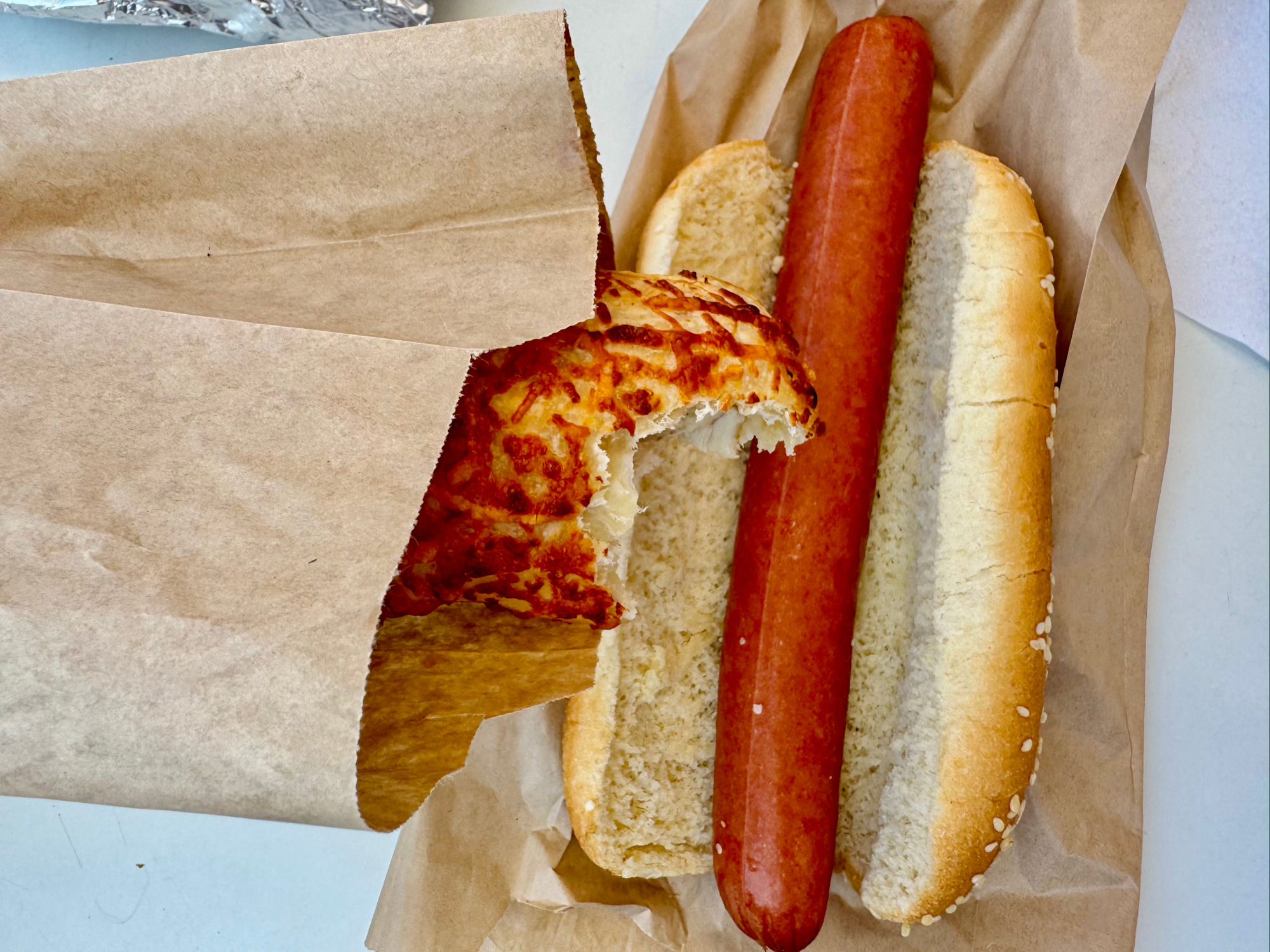


Chicken Bake Dog
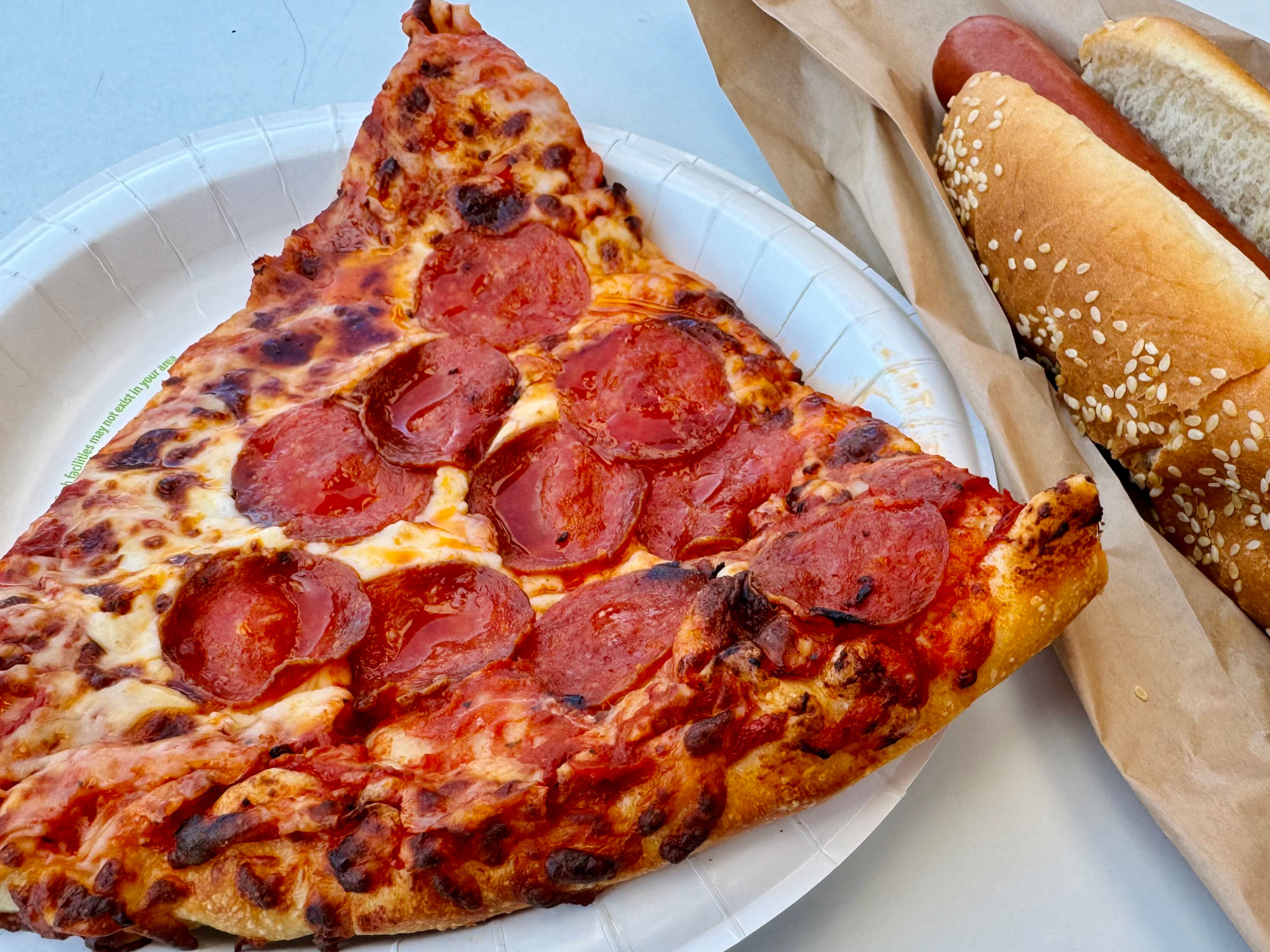
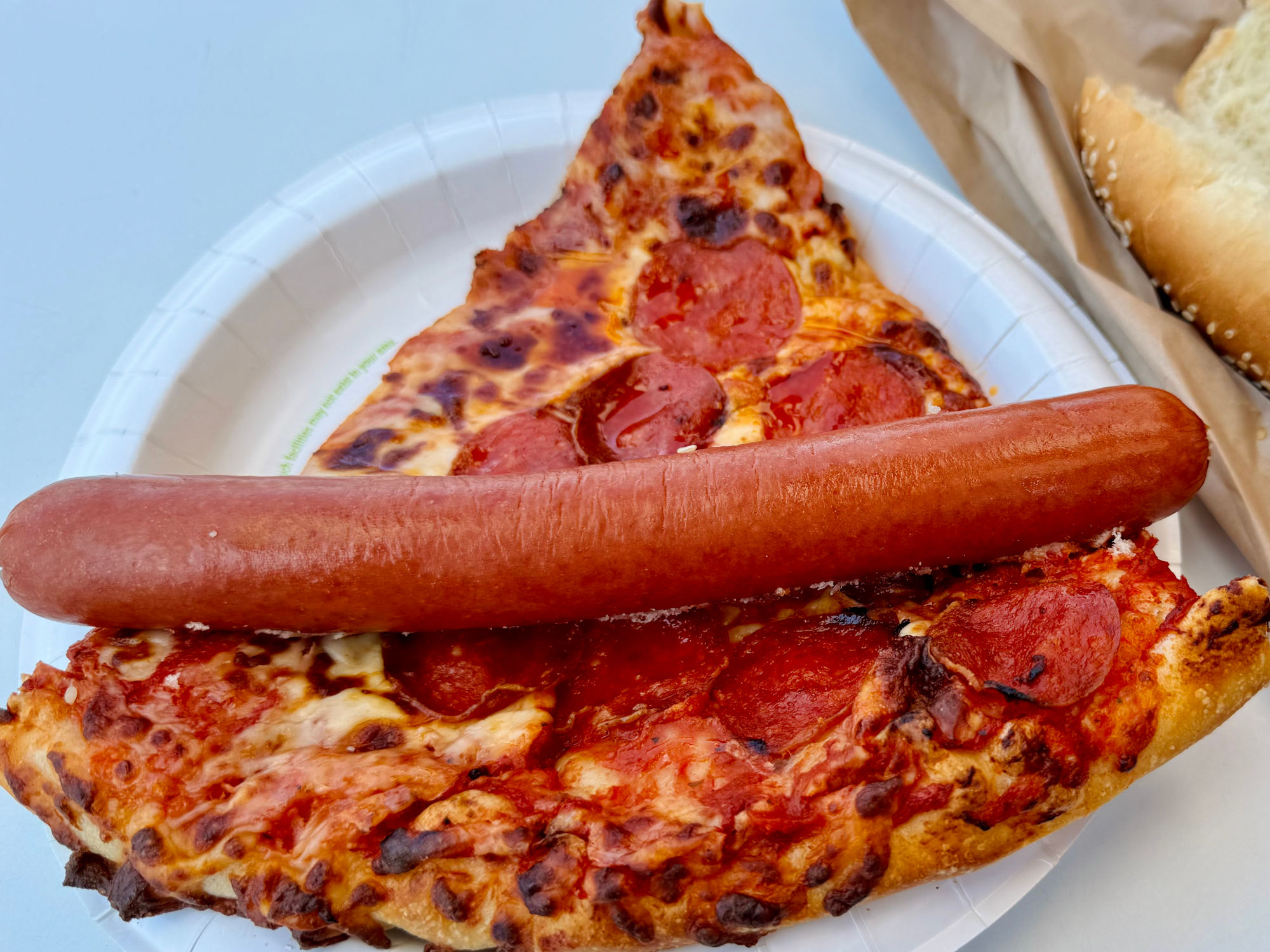

Pizza Dog

CostcoCostco is a Membership Warehouse Club
Costco Wholesale is a multi-billion dollar global retailer with warehouse club operations in eight countries. We are the recognized leader in our field, dedicated to quality in every area of our business and respected for our outstanding business ethics. Dedicated to bringing our members the best possible prices on quality brand-name merchandise. With hundreds of locations worldwide, Costco provides a wide selection of merchandise, plus the convenience of specialty departments and exclusive member services, all designed to make your shopping experience a pleasurable one.The company's first location, opened in 1976 under the Price Club name, was in a converted airplane hangar on Morena Boulevard in San Diego. Originally serving only small businesses, the company found it could achieve far greater buying clout by also serving a selected audience of non-business members. With that change, the growth of the warehouse club industry was off and running. In 1983, the first Costco warehouse location was opened in Seattle. Costco became the first company ever to grow from zero to $3 billion in sales in less than six years. When Costco and Price Club merged in 1993, the combined company, operating under the name PriceCostco, had 206 locations generating $16 billion in annual sales.
Our operating philosophy has been simple. Keep costs down and pass the savings on to our members. Our large membership base and tremendous buying power, combined with our never-ending quest for efficiency, result in the best possible prices for our members. Since resuming the Costco name in 1997, the company has grown worldwide with total sales in recent fiscal years exceeding $64 billion. For additional information about Costco, download the Costco Story in a PDF format to learn more.
Costco has transformed the retail world. When entrepreneur Sol Price introduced a groundbreaking retail concept in San Diego, California. Price Club was the world's first membership warehouse club, a place where efficient buying and operating practices gave members access to unmatched savings.
At first, Price Club was limited exclusively to business members, who could purchase a wide range of supplies and wholesale items. Jim Sinegal, the executive vice-president of merchandising, distribution and marketing, was instrumental in fine-tuning the merchandise and marketing strategies, helping to turn Price Club into a success story that changed the face of retailing worldwide.
Seven years later, Jim Sinegal channeled his expertise into co-founding Costco Wholesale with Jeff Brotman, and together they opened the first warehouse in Seattle, Washington in 1983.
Over the next decade, both Price Club and Costco Wholesale continued to innovate and grow, and in 1993, the two mega-retailers merged, creating a gifted leadership team that soon made Costco the world's most successful warehouse club.
Today, as the company evolves, it stays true to the qualities that helped attract and retain millions of loyal members around the globe:
- Commitment to Quality
Costco warehouses carry about 4,000 SKUs (stock keeping units) compared to the 30,000 found at most supermarkets. By carefully choosing products based on quality, price, brand, and features, the company can offer the best value to members.- Entrepreneurial Spirit
Throughout the decades, the entrepreneurial drive for excellence has continued to define Costco staff at every level. From its management team to the people on the warehouse floor, everyone is united in a common goal to exceed member expectations.- Employee Focus
Costco is often noted for being much more employee-focused than other Fortune 500 companies. By offering fair wages and top-notch benefits, the company has created a workplace culture that attracts positive, high-energy, talented employees.Corporate Overview
We operate membership warehouses and e-commerce websites based on the concept that offering our members low prices on a limited selection of nationally-branded and private-label products in a wide range of categories will produce high sales volumes and rapid inventory turnover. When combined with the operating efficiencies achieved by volume purchasing, efficient distribution and reduced handling of merchandise in no-frills, self-service warehouse facilities, these volumes and turnover enable us to operate profitably at significantly lower gross margins.
Costco: February 2024 Membership Data: 130 Million Cardholders 73.4 million Households Warehouse Sizes: 147,000 sq ft Average Annual Net Sales (FY23): $237.7 Billion Number of U.S. Employees: 206,000 Number of Worldwide Employees: 316,000 Number of Warehouses: 875 Number of Locations: 47 U.S. States & Puerto Rico 603 Nine Canadian provinces 108 Mexico 40 Japan 33 United Kingdom 29 Korea 18 Australia 15 Taiwan 14 China 6 Spain 4 France 2 Iceland 1 New Zealand 1 Sweden 1
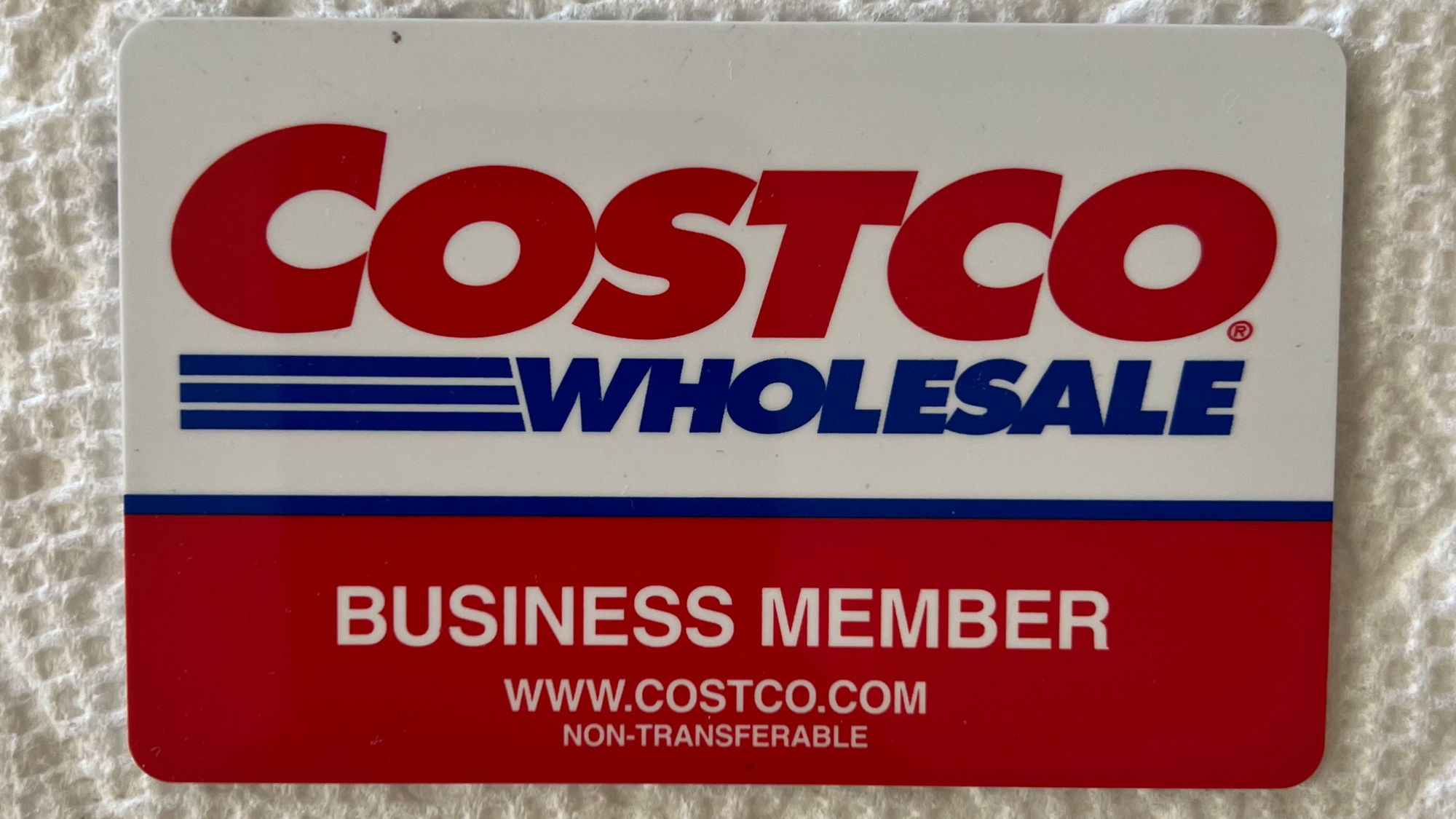
WIKIPEDIAStarted as 1985 Hot Dog Cart
In 1985, Costco started to sell freshly prepared food through a hot dog cart at its original Seattle warehouse. Most Costco locations now have a food court. They can be indoors or outdoors, but the menu is essentially the same: hot dog with drink (one of the most popular items), pizza, frozen yogurt/ice cream, Pepsico beverages, baked items, and sandwiches.Costco offers its signature quarter-pound 100% beef hot dog and 20 ounce drink (with refills) for US$1.50, the same price since 1985. Some US locations also offer Polish sausage or bratwurst in addition to hot dogs, at the same $1.50 price. The hot dog sausages were kosher and supplied by Hebrew National and Sinai Kosher until 2009, when supply issues and low profit margins led Costco to start producing them in-house under the Kirkland Signature label to maintain the $1.50 price.
- Diced onion was discontinued in March 2020 but returned as a topping in May 2023.
As of June 2022, cheese or pepperoni pizza (along with pre-ordering of full pizzas to take home), chicken bakes, ice cream (vanilla), ice cream sundae (vanilla, with very berry or chocolate sauce toppings), fruit smoothies, latte freeze (without chocolate), mocha freeze (with chocolate), and twisted churros (in select stores) are offered at all United States locations.
WIKIPEDIAThe Costco Hot Dog
1/4lb hot dog sold at the international warehouse club Costco's food courts. It is notable for its price, which has remained steady at $1.50 in a combo deal including a soda at United States locations since its introduction in 1984. That price has become increasingly low relative to inflation.
- The Costco hot dog was introduced to food courts in 1984, one year after Costco's opening in 1983.
- The original hot dog was made by Hebrew National, and was sold at a hot dog cart outside a Costco location in San Diego.
- The price was set at $1.50 at its introduction, and has remained at $1.50 ever since.
- The product varies across countries; the U.S. version consists of a Kirkland brand wiener, some warehouses selling it with a sesame bun, some selling it with a plain bun.
- It is sold as part of a combo deal with a 20 US fl oz (590 mL) soda.
- In 2008, Costco began using its own hot dog factories, reducing supply chain costs. A Costco meat processing facility in Tracy, California, that had been around since 2004 began producing hot dogs in 2011, and produced both the hot dogs sold in the food court as well as smaller hot dogs sold in packs. The switch also ushered in the usage of non-kosher beef. Another facility was opened in Morris, Illinois in 2018.
- The soda fountains at the Costco food courts were stocked with Coca-Cola products until 2013, when Costco switched to Pepsi products as a cost savings measure for the combo.
- As of 2018, Costco sold a yearly average of 135 million hot dogs, more than every Major League Baseball stadium combined.
- In 2022, Costco CFO Richard Galanti stated that Costco intends to keep the combo deal's price constant "forever."
COSTCO HOT DOG$1.50
In 2009, the Seattle Times asked Costco co-founder (and then-CEO) Jim Sinegal, "If ever goes up, what will it mean?" Sinegal replied, "That I'm dead." Craig Jelinek, the current CEO of Costco, revealed in 2018 that he approached Sinegal about raising the price of the hot dog combo, saying, "Jim, we can't sell this hot dog for a buck fifty. We are losing our rear ends." According to Jelinek, Sinegal replied, "If you raise the effing hot dog, I will kill you. Figure it out."Several explanations exist as to why Costco chooses to continue to sell its hot dog combo at an unusually low price point.
When asked why the price of the hot dog was significant to him, Jim Sinegal said, "Because everybody talks about it. People look at that hot dog and say a buck fifty, this is unbelievable." He continued, "We're known for that hot dog. That's something you don't mess with."
According to David Fuller, assistant vice president of publishing, "Costco wanted to prove that a business can operate on a fair markup and still pay all of its bills. Holding a price that steady for that long sends a clear message about what is possible when you decide to operate your business model on a 'cost plus' basis instead of a 'what the market will bear' basis." Costco vice-president Bob Nelson stated that "It epitomizes the value that we stand for."
Some commentators and employees have called the hot dog a loss leader, drawing in enough customers to compensate for lost profits. Costco CFO Richard Galanti did not directly confirm or deny this theory, but commented that "Needless to say we aren't making a lot or any" profit on food court products.
Some have also theorized that the popularity of the food court, which is located near the entrance at Costco locations, creates a welcoming atmosphere, luring in more customers and encouraging customer retention.
